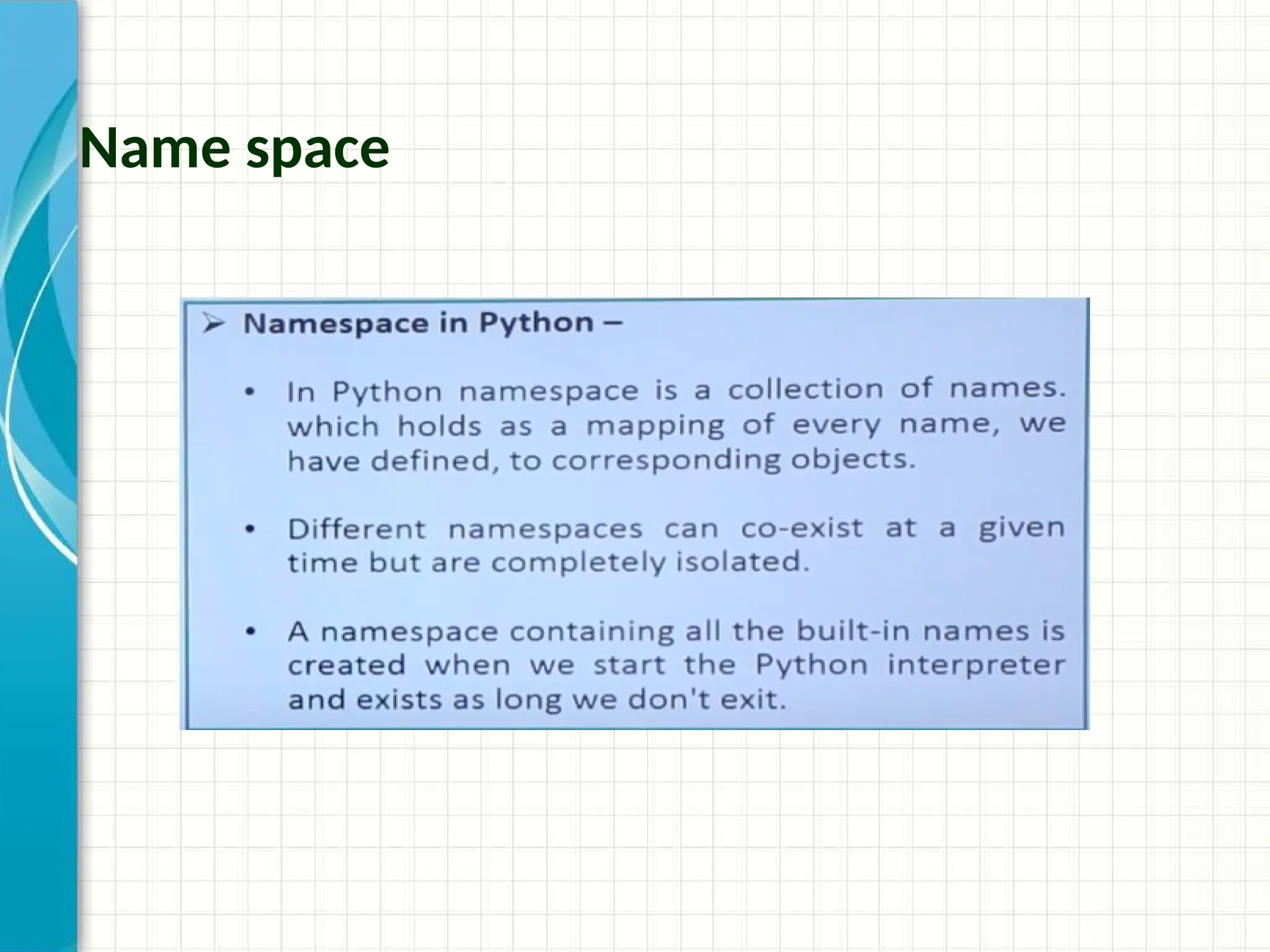The document provides a comprehensive overview of Python functions, highlighting their purpose in code reusability and debugging. It covers various types of arguments like required, keyword, default, and variable-length arguments, along with the use of lambda functions and the concept of local versus global variables. The document concludes with examples illustrating the scope of variables and the differences between pass-by-reference and pass-by-value.
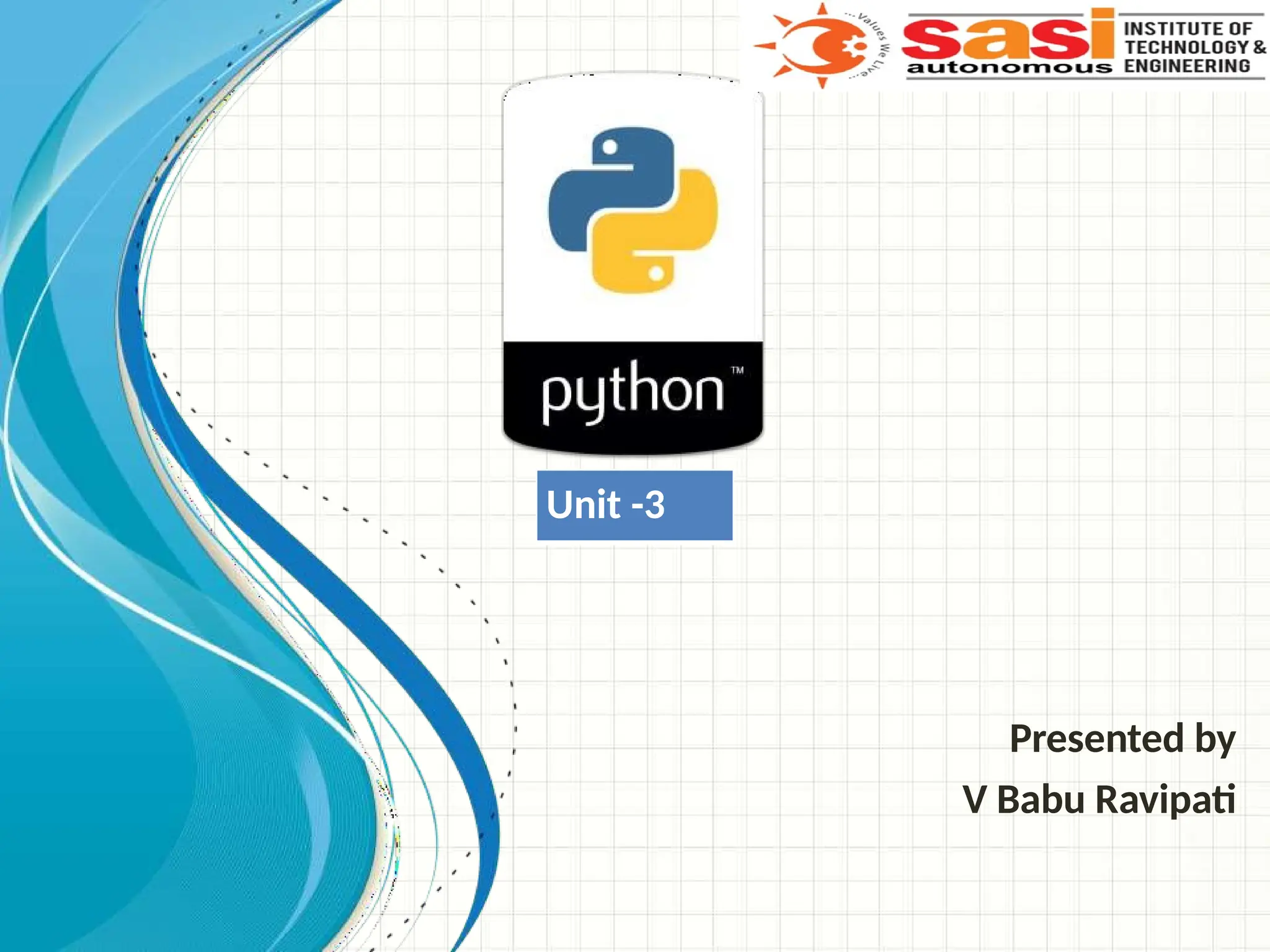
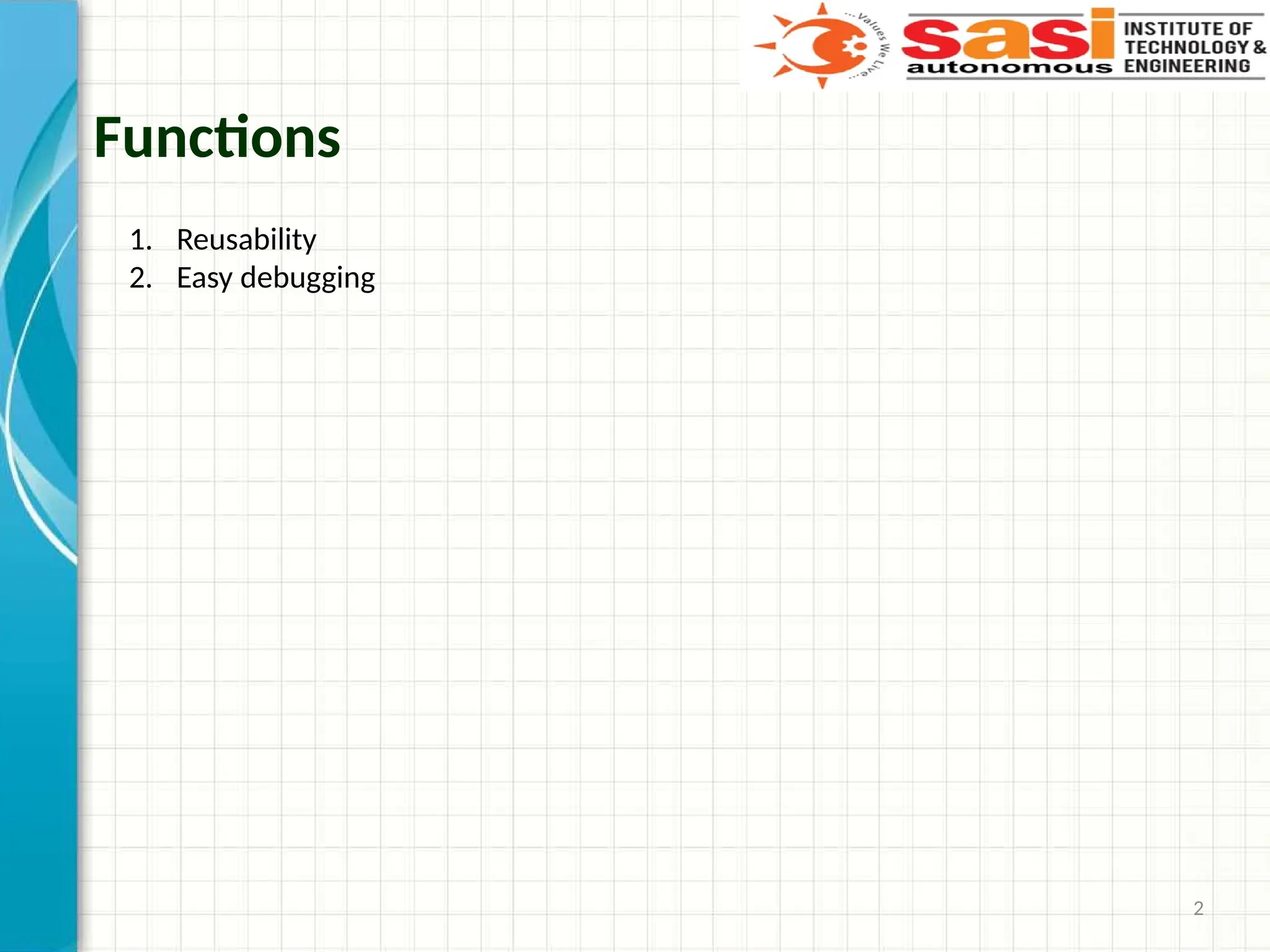
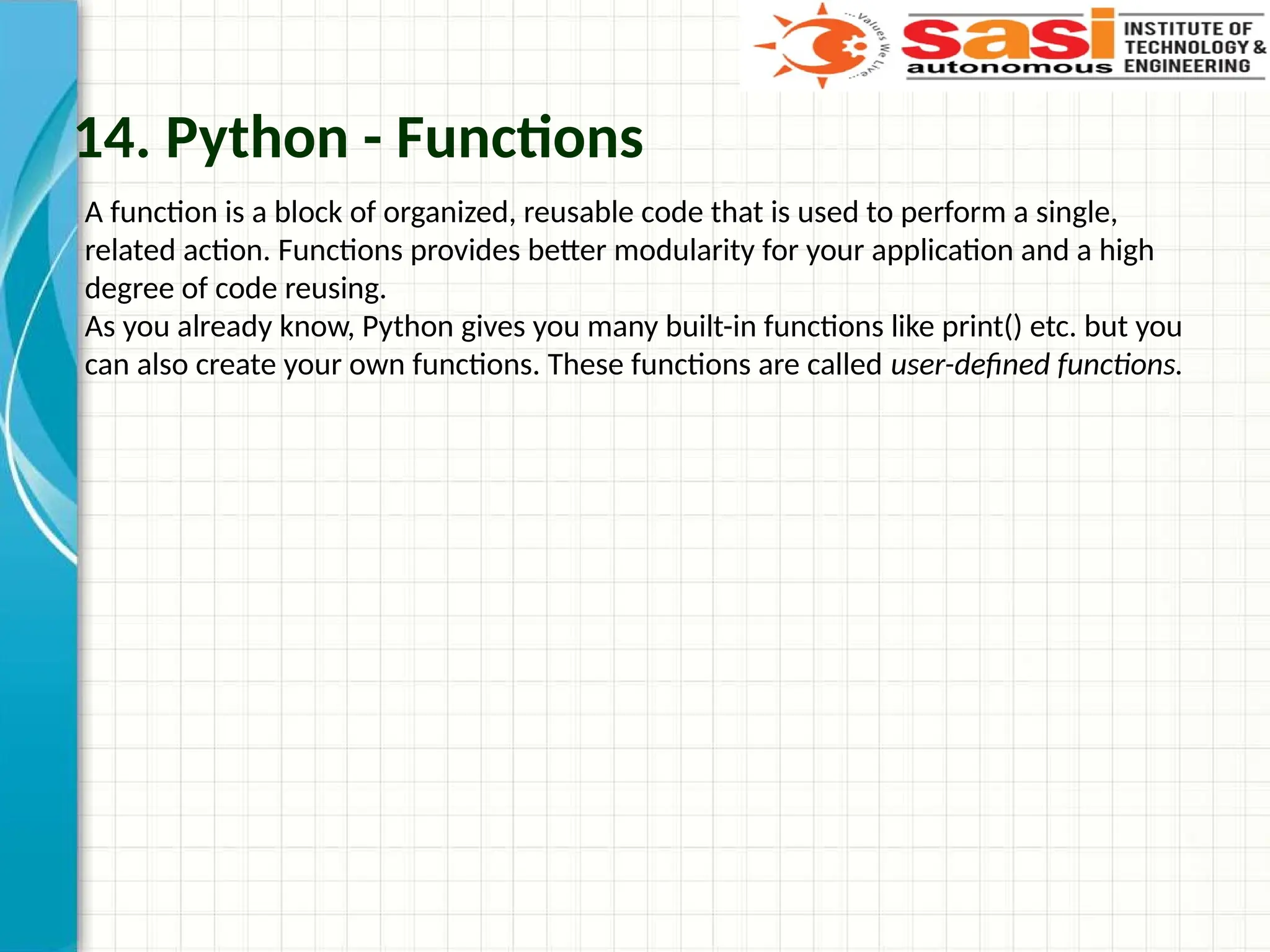
![Defining a Function
Here are simple rules to define a function in Python:
• Function blocks begin with the keyword def followed by the
function name (shouldnot be keyword) and parentheses ( ) .
• Any input parameters or arguments should be placed within
these parentheses. You can also define parameters or
arguments inside these parentheses.
• The first statement of a function can be an optional statement
- the documentation string of the function or docstring.
• The code block within every function starts with a colon (:) and
is indented.
• The statement return [expression] exits a function, optionally
passing back an expression to the caller. A return statement
with no arguments is the same as return None.](https://image.slidesharecdn.com/pythonunit3-250119131330-f203f0f8/75/JNTUK-python-programming-python-unit-3-pptx-4-2048.jpg)
![Syntax:
def functionname( parameters ):
"function_docstring“
function_suite
[expression]
return
Example
Def add(a,b):
sum=a+b
return sum
a=int(input(“enter first number”))
b=int(input(“enter second number”))
res=add(a,b)
print(“result = “res)](https://image.slidesharecdn.com/pythonunit3-250119131330-f203f0f8/75/JNTUK-python-programming-python-unit-3-pptx-5-2048.jpg)
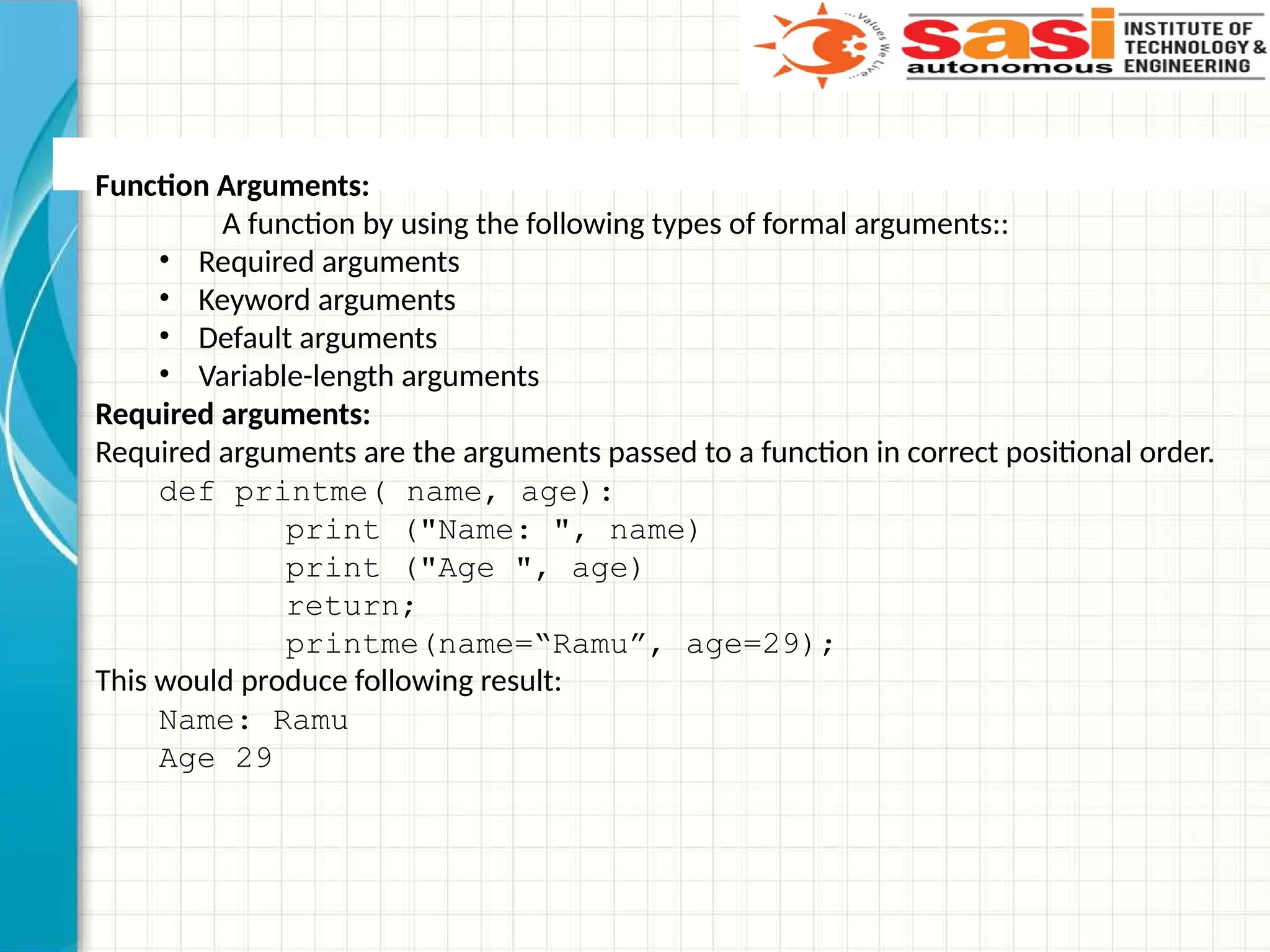
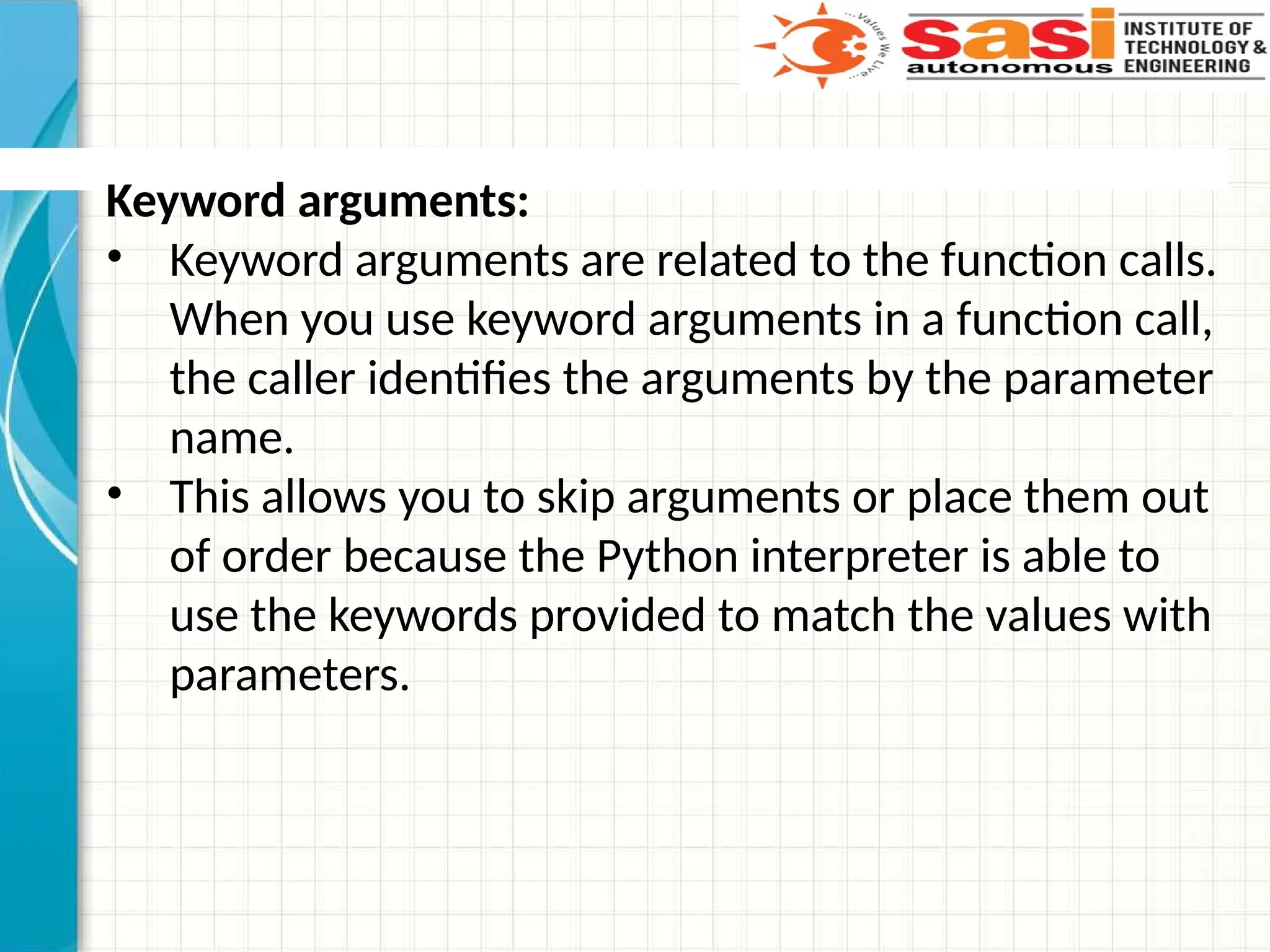
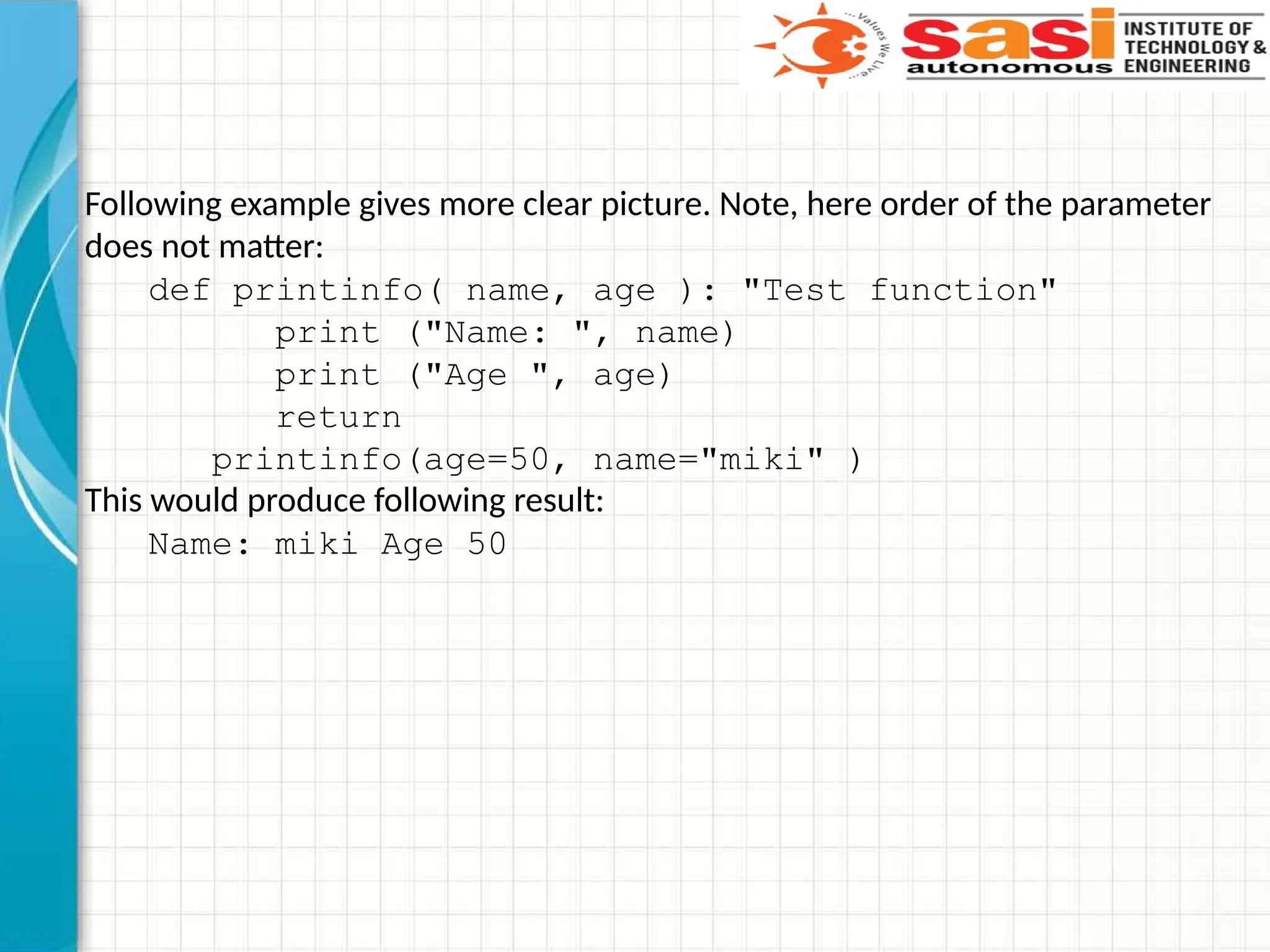
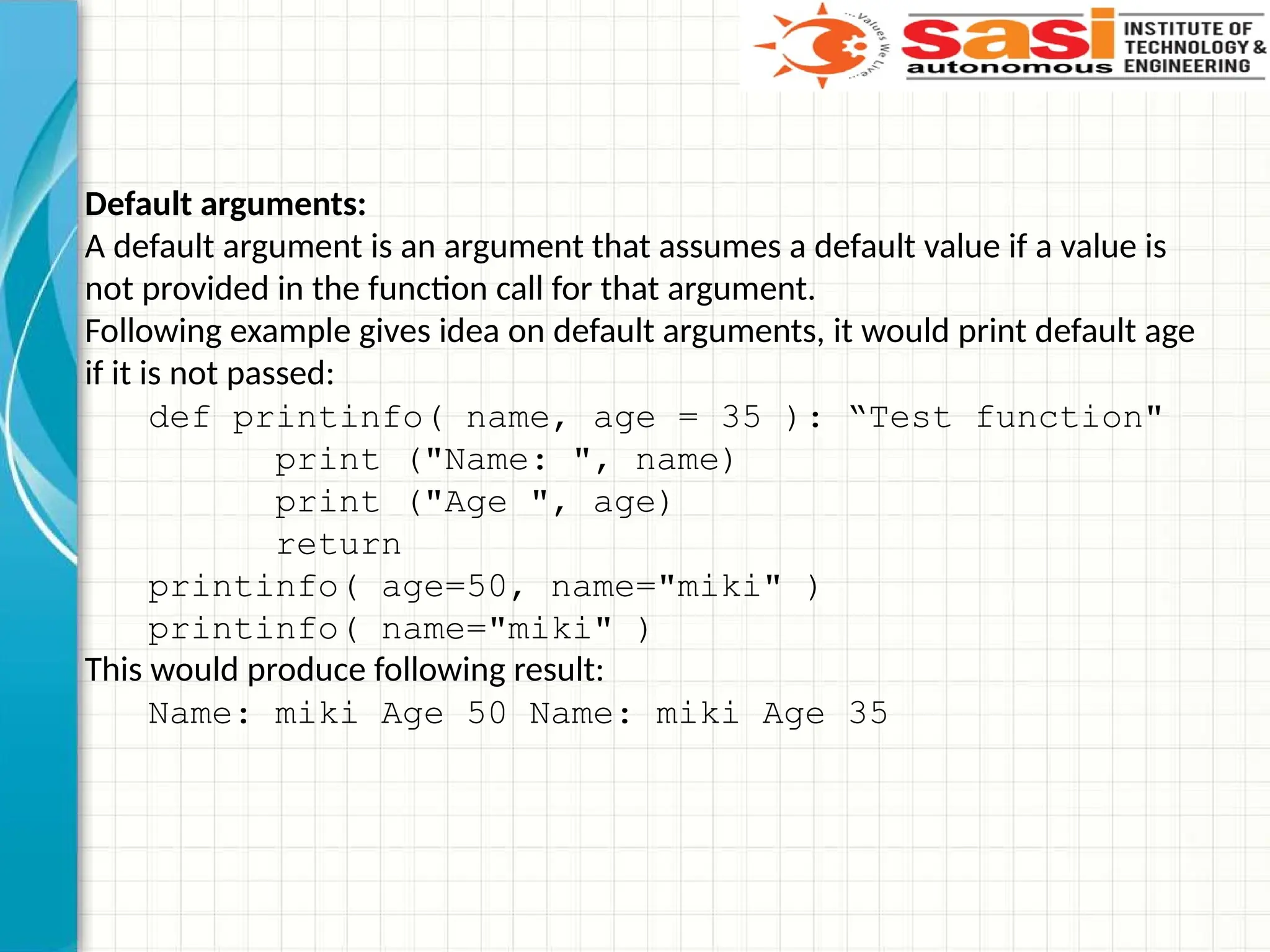
![Variable-length arguments:
You may need to process a function for more arguments than you specified
while defining the function. These arguments are called variable-length
arguments and are not named in the function definition, unlike required and
default arguments.
The general syntax for a function with non-keyword variable arguments is this:
def functionname([formal_args,] *var_args_tuple ):
"function_docstring"
function_suite
return [expression]](https://image.slidesharecdn.com/pythonunit3-250119131330-f203f0f8/75/JNTUK-python-programming-python-unit-3-pptx-10-2048.jpg)
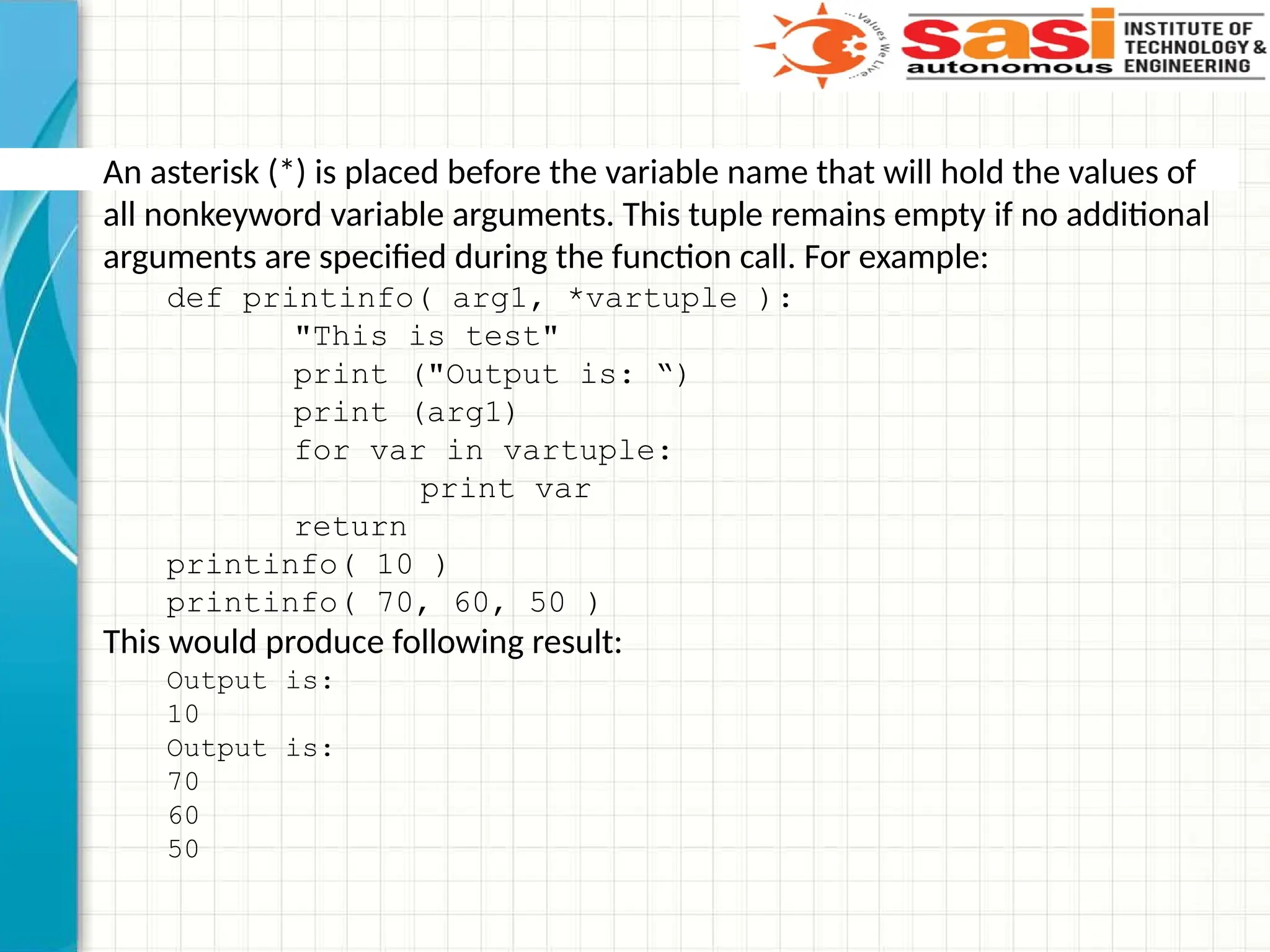
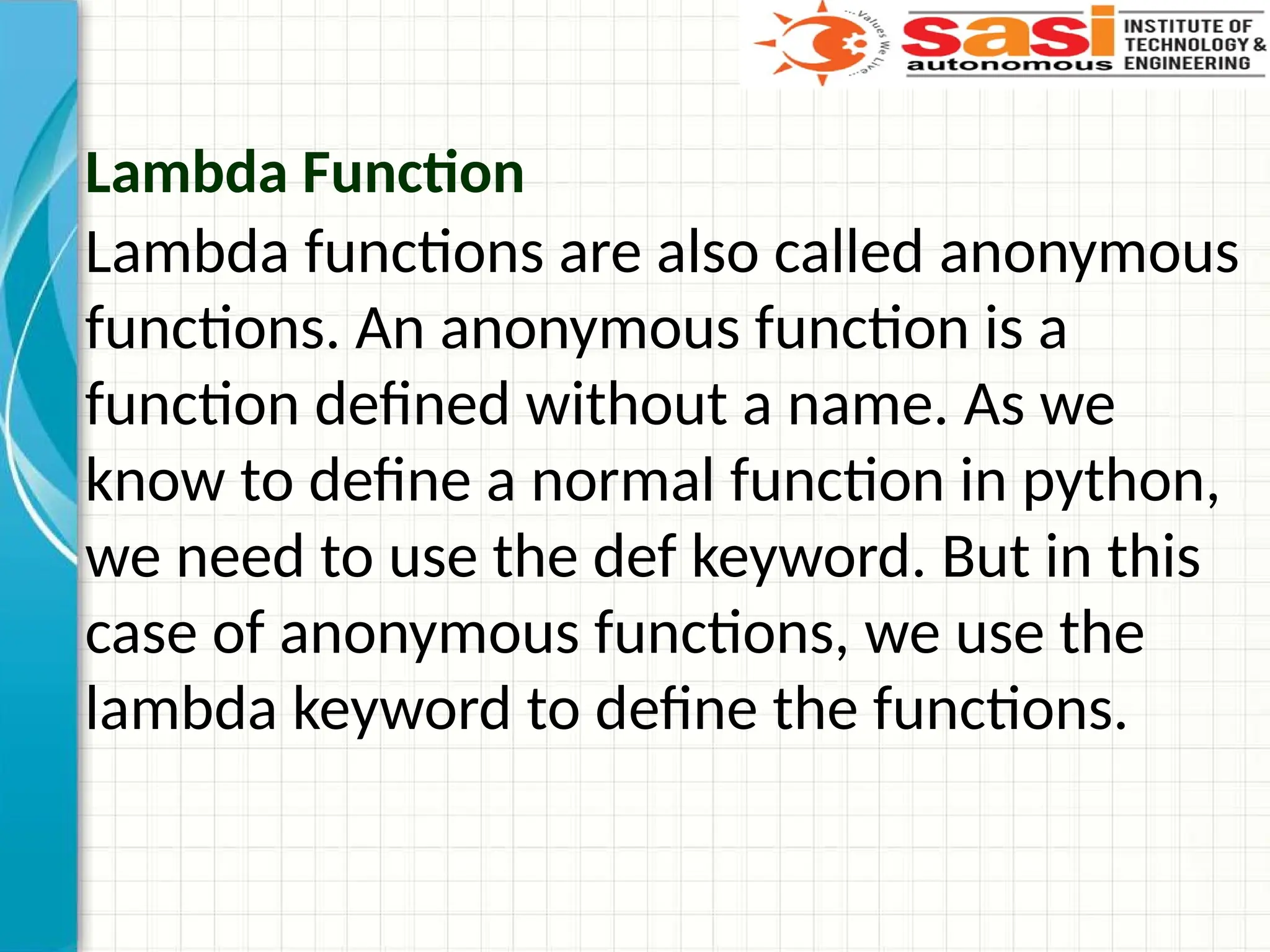
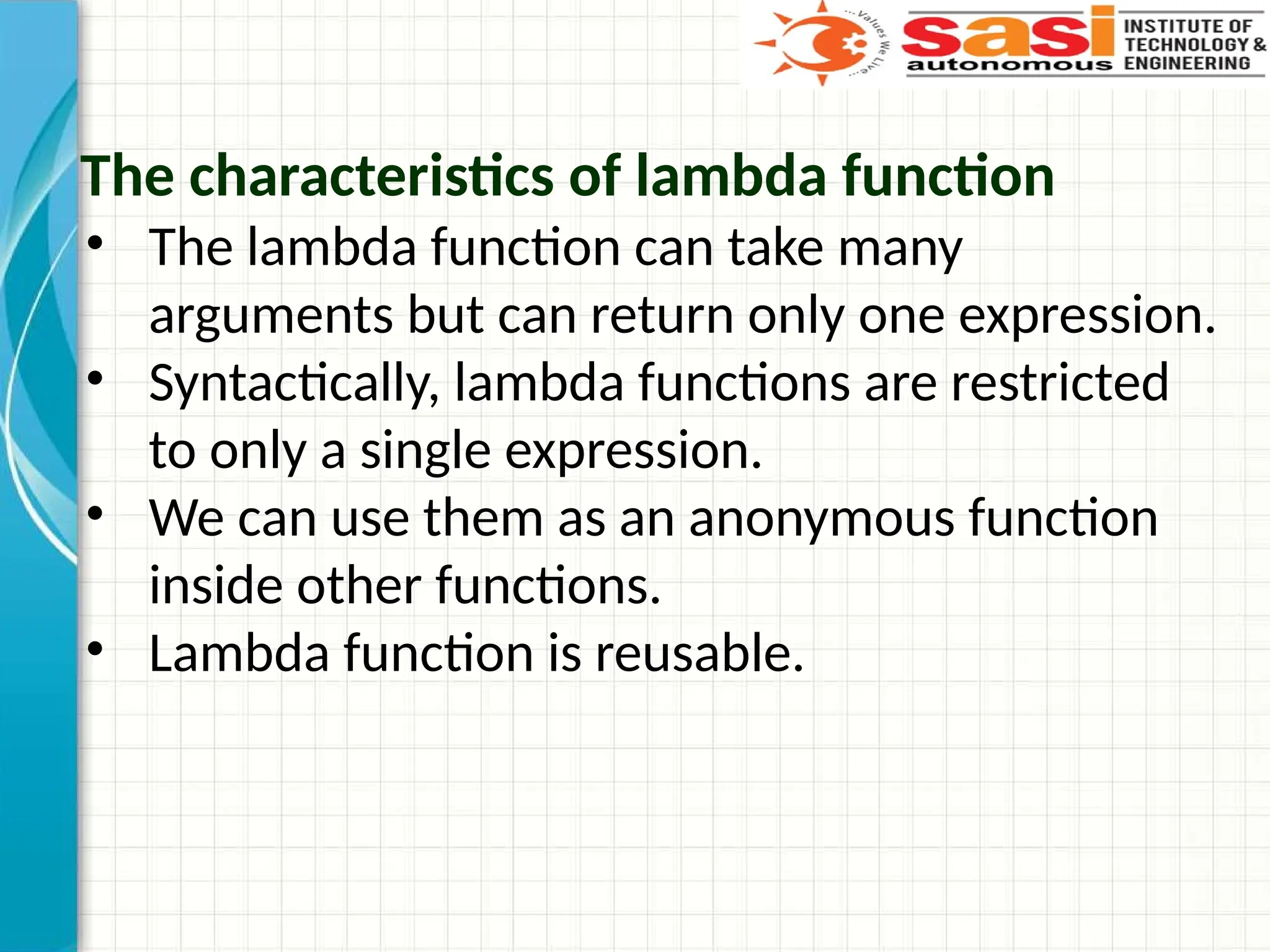
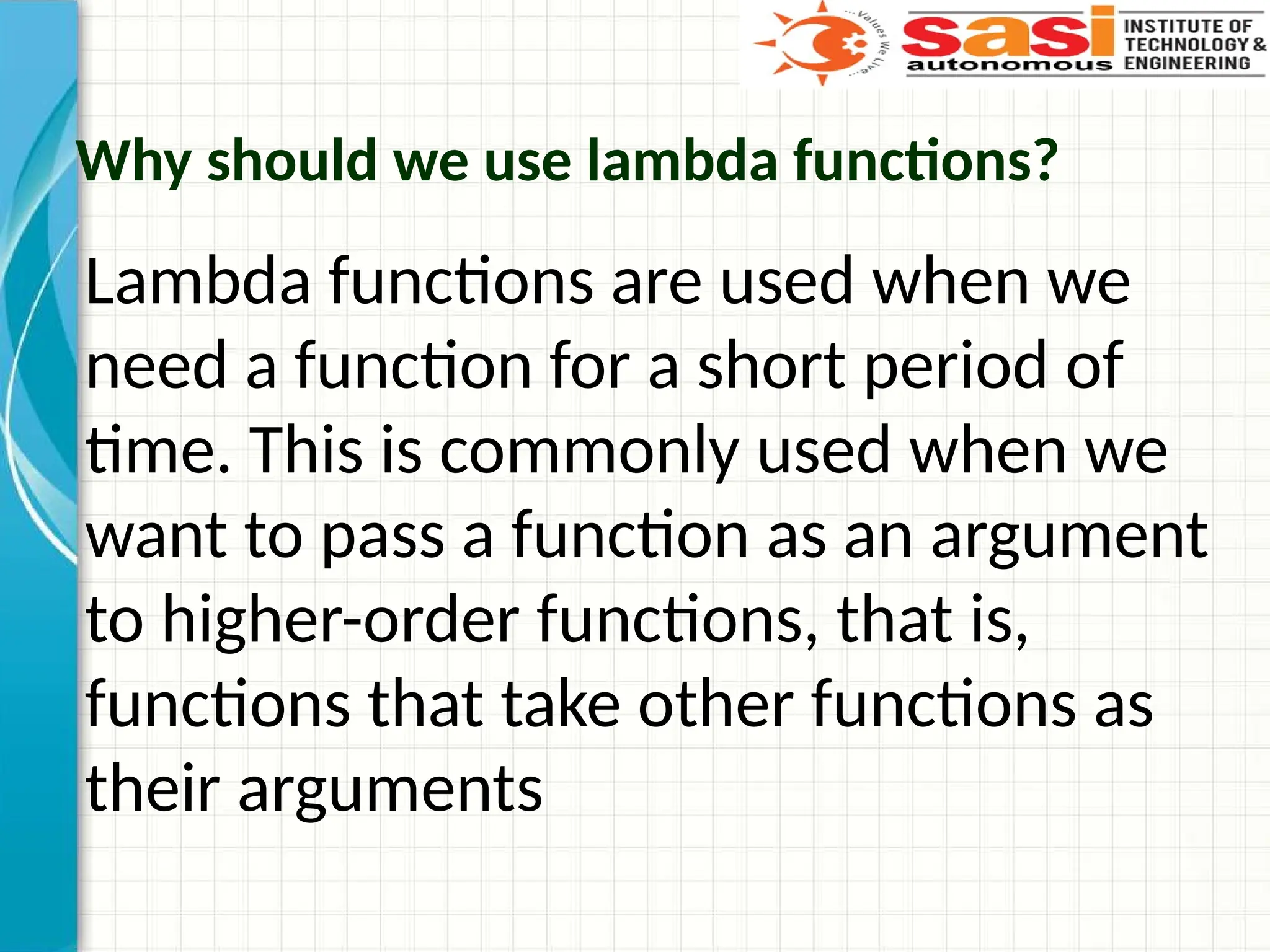
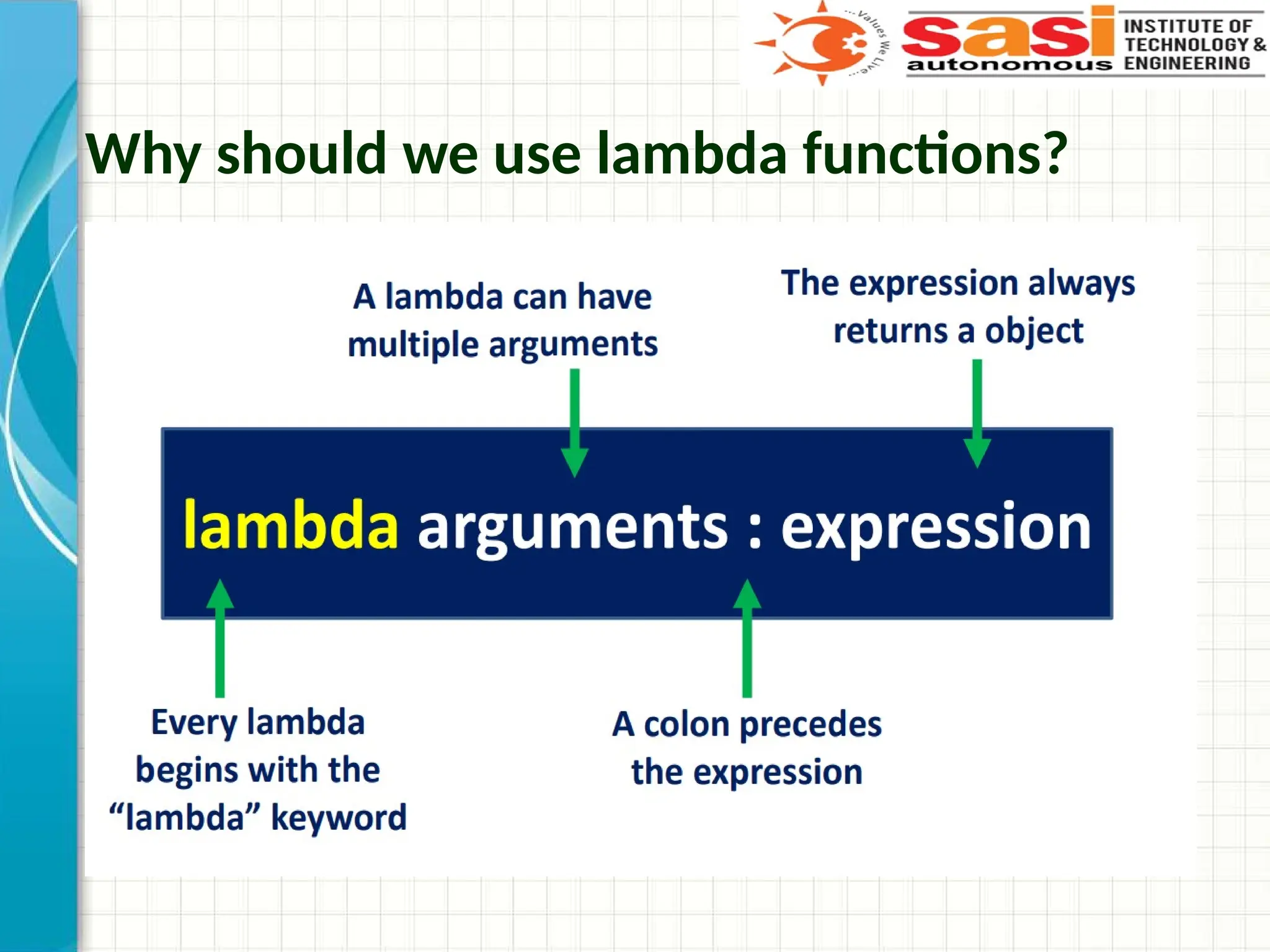
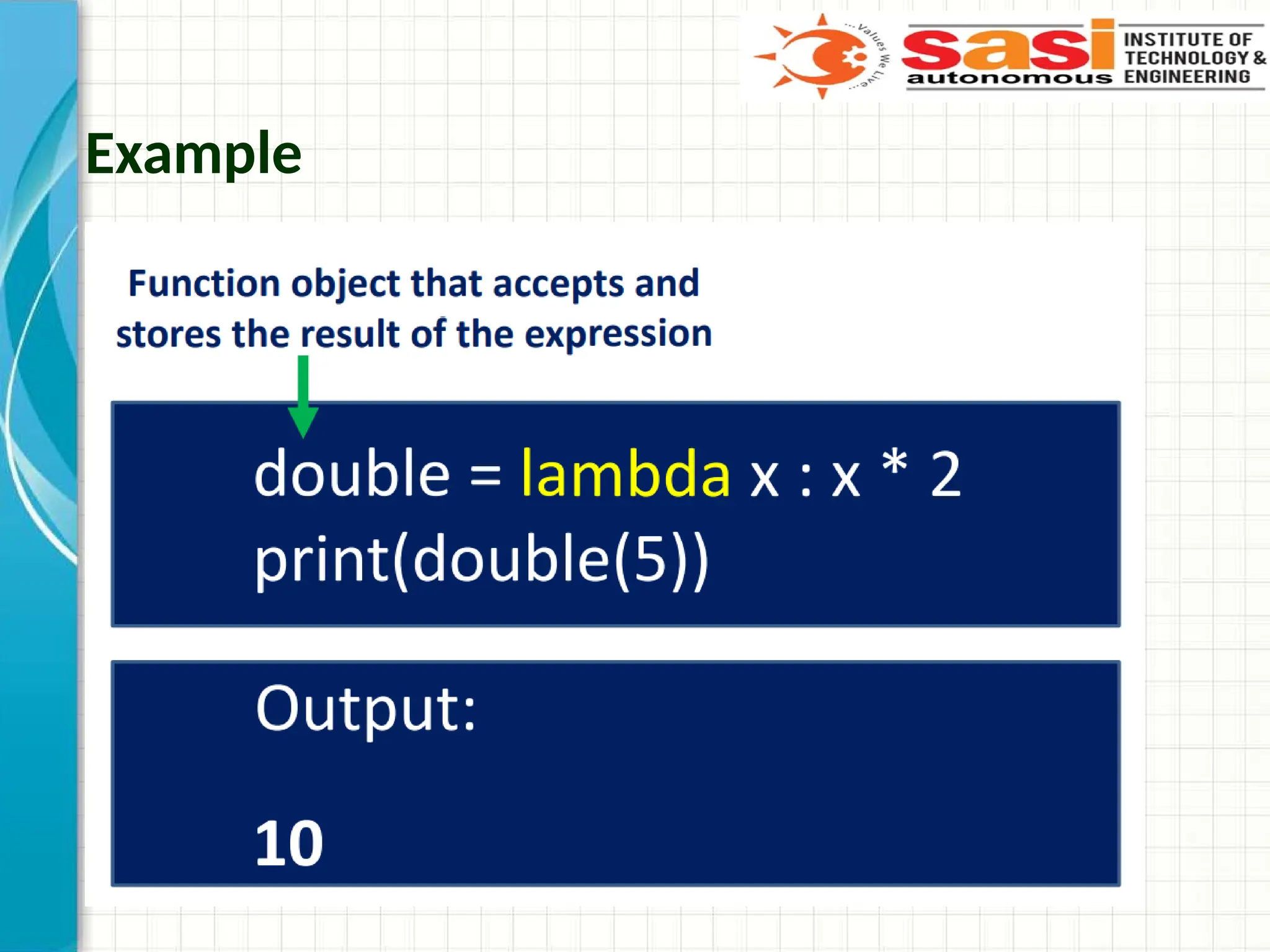
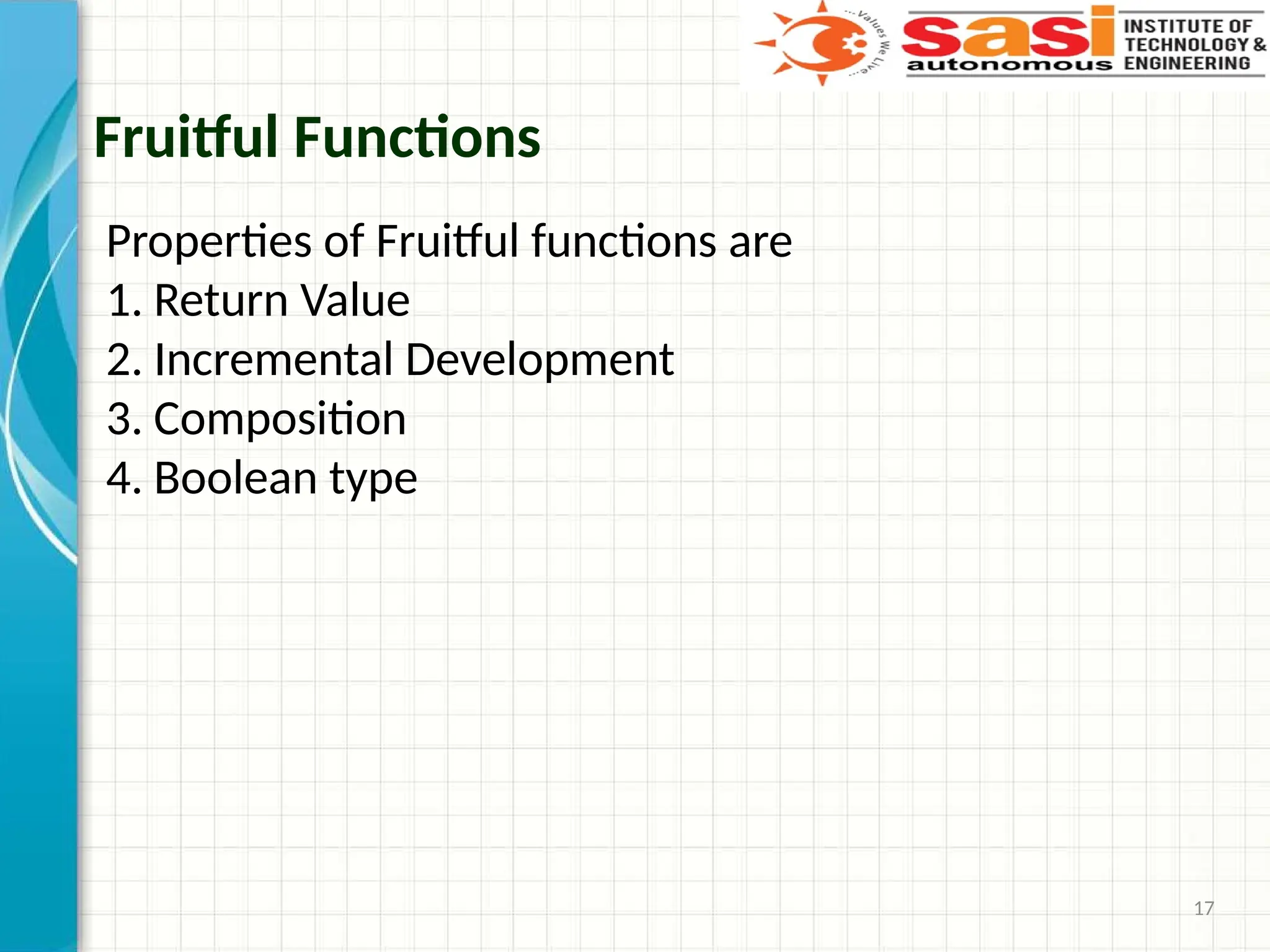
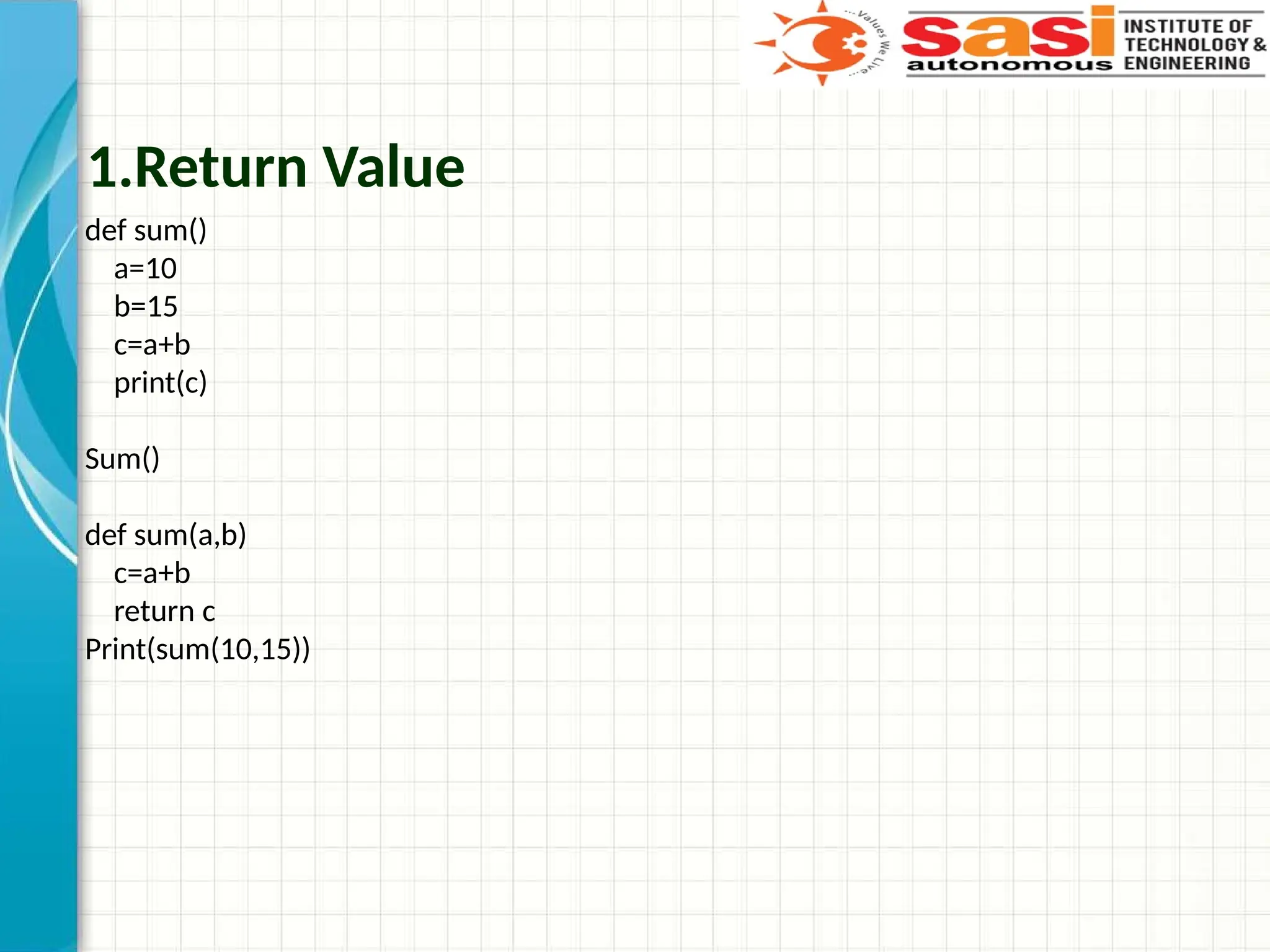
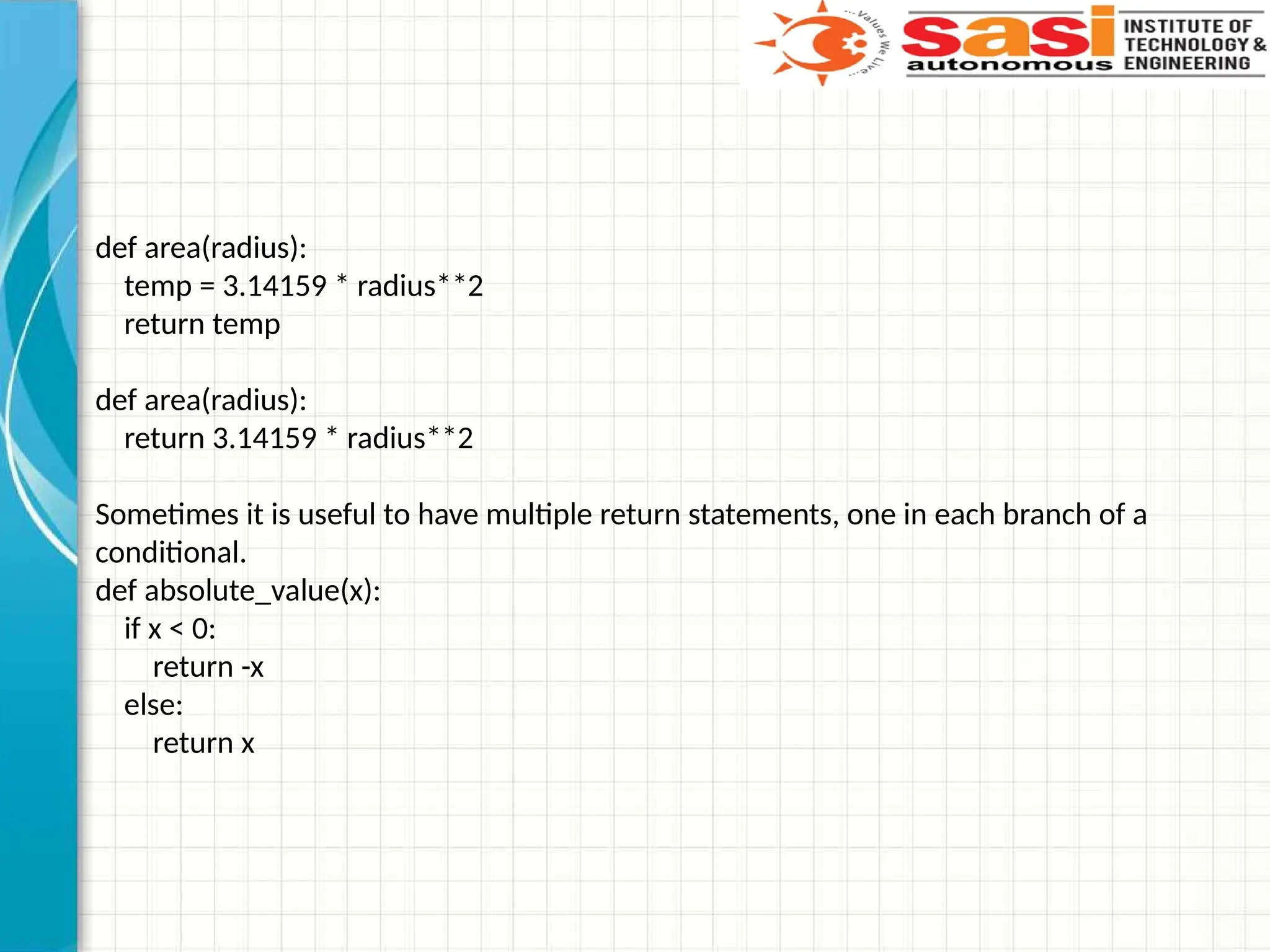
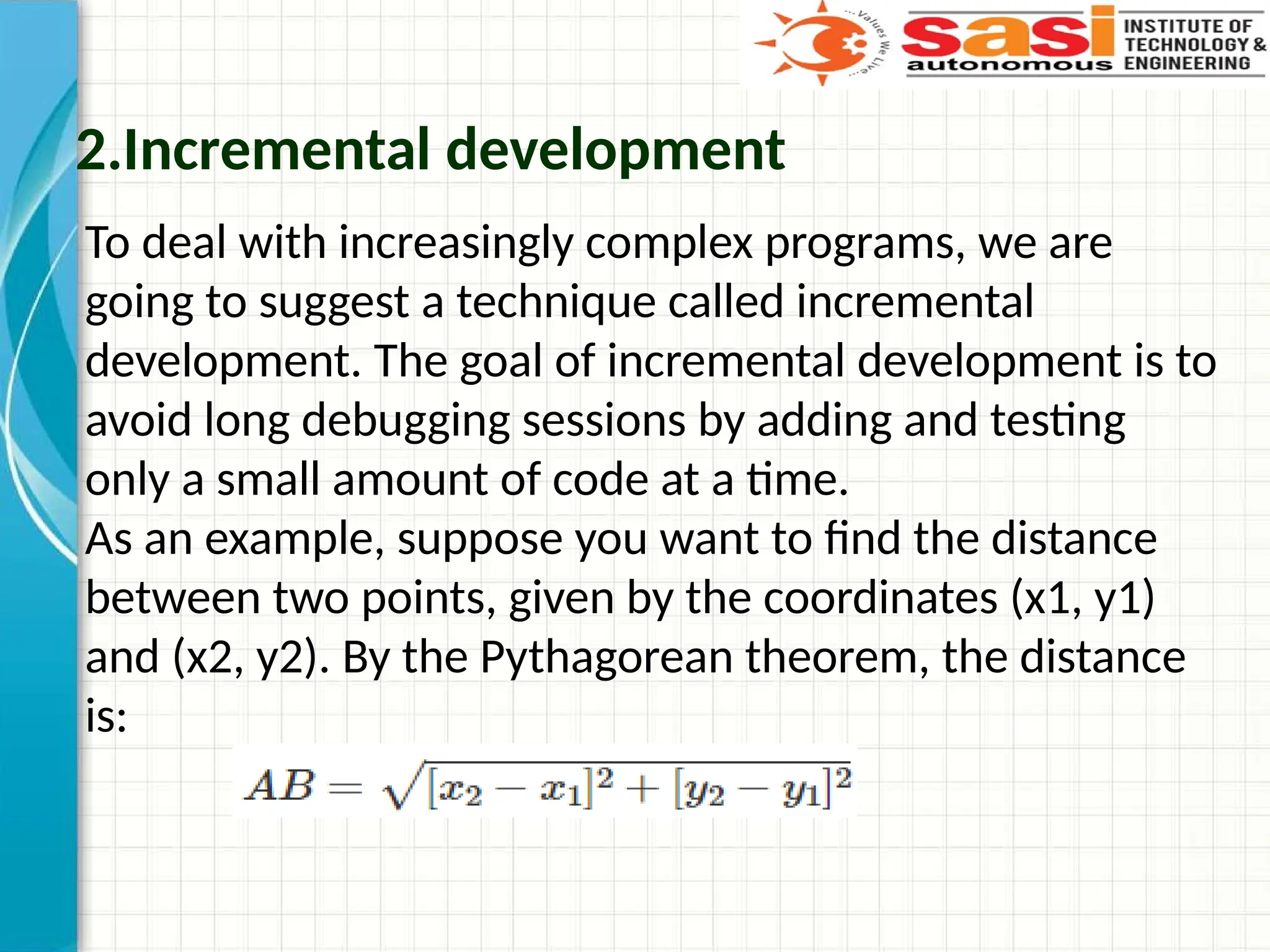
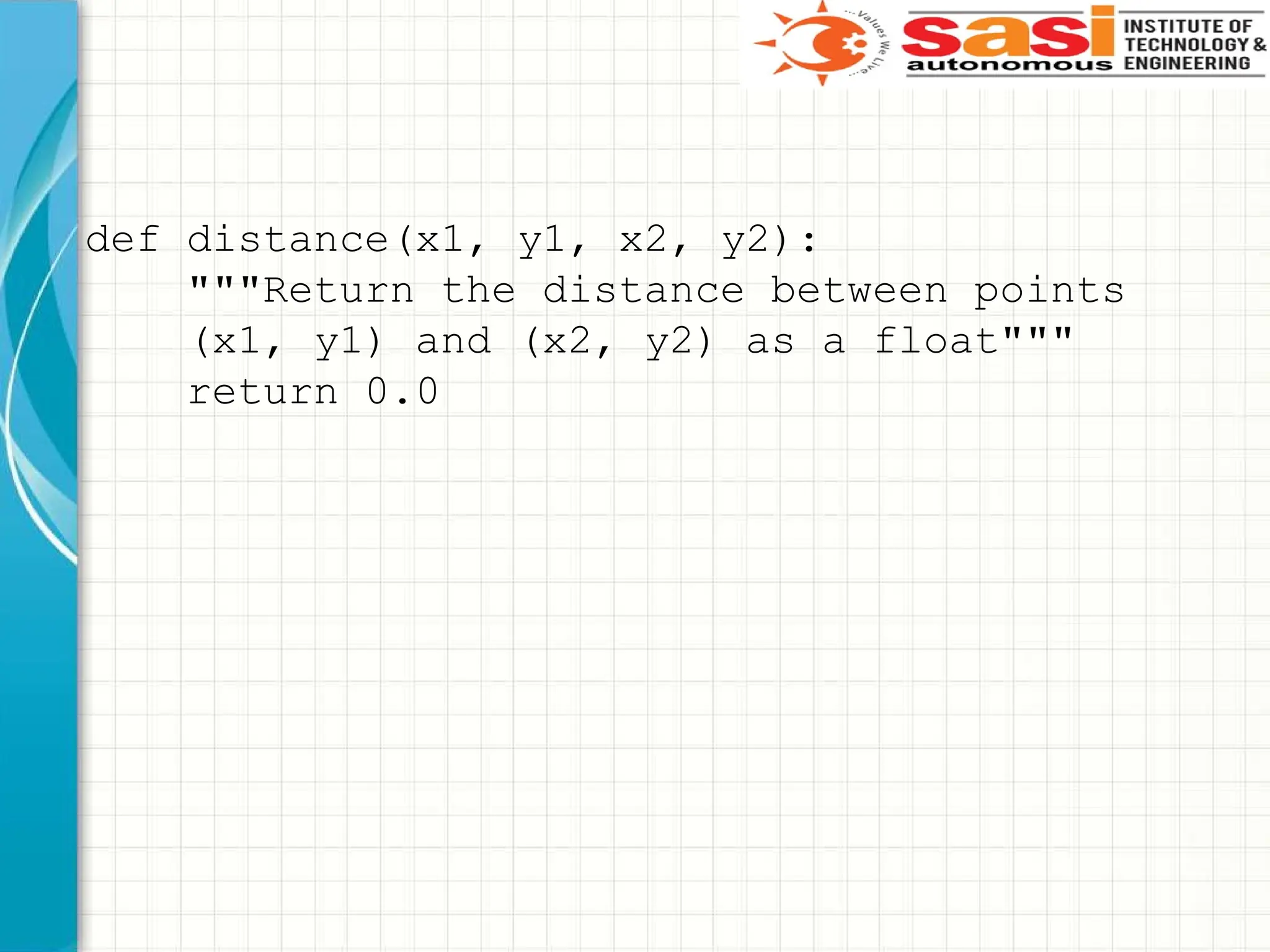
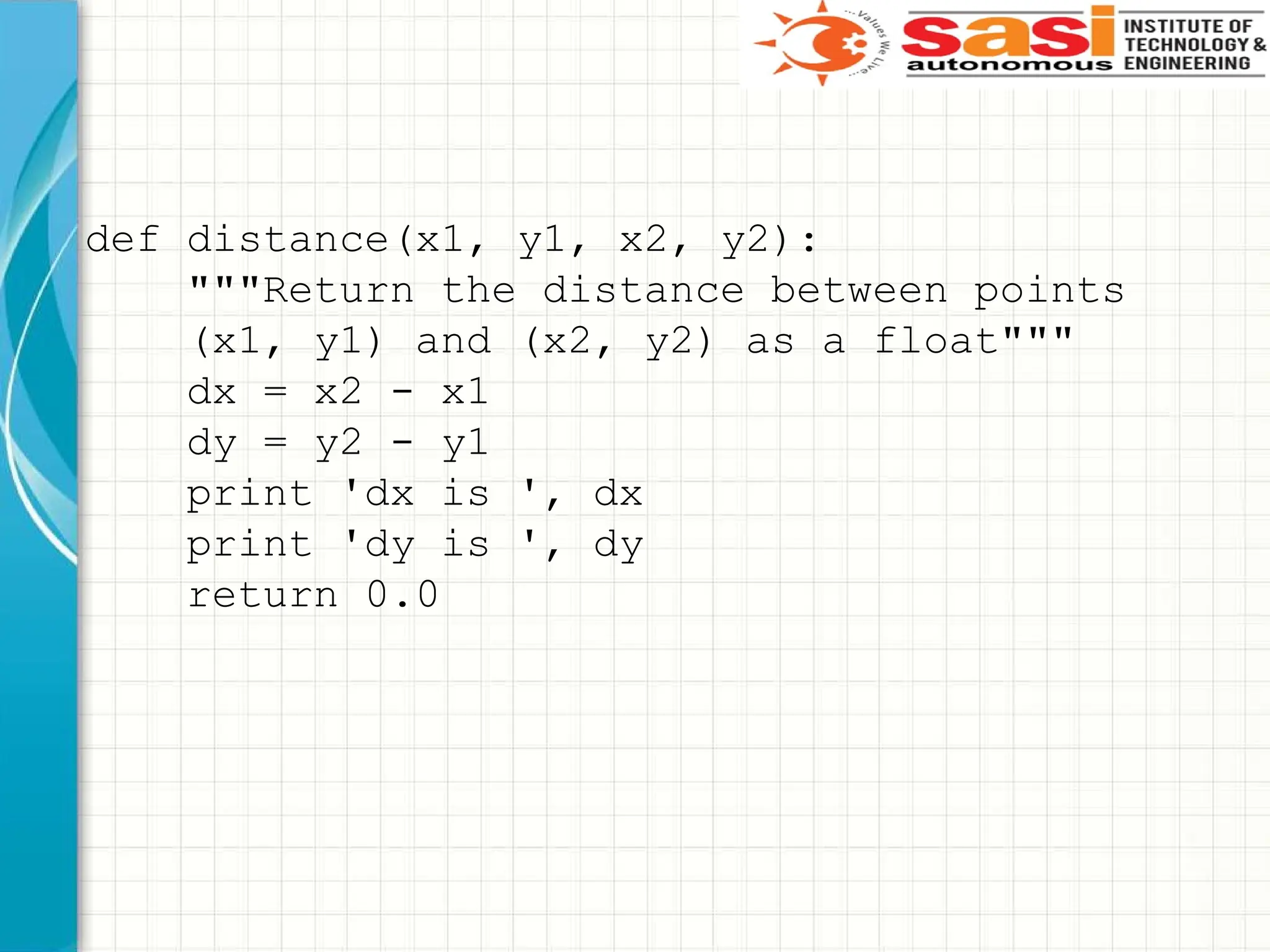
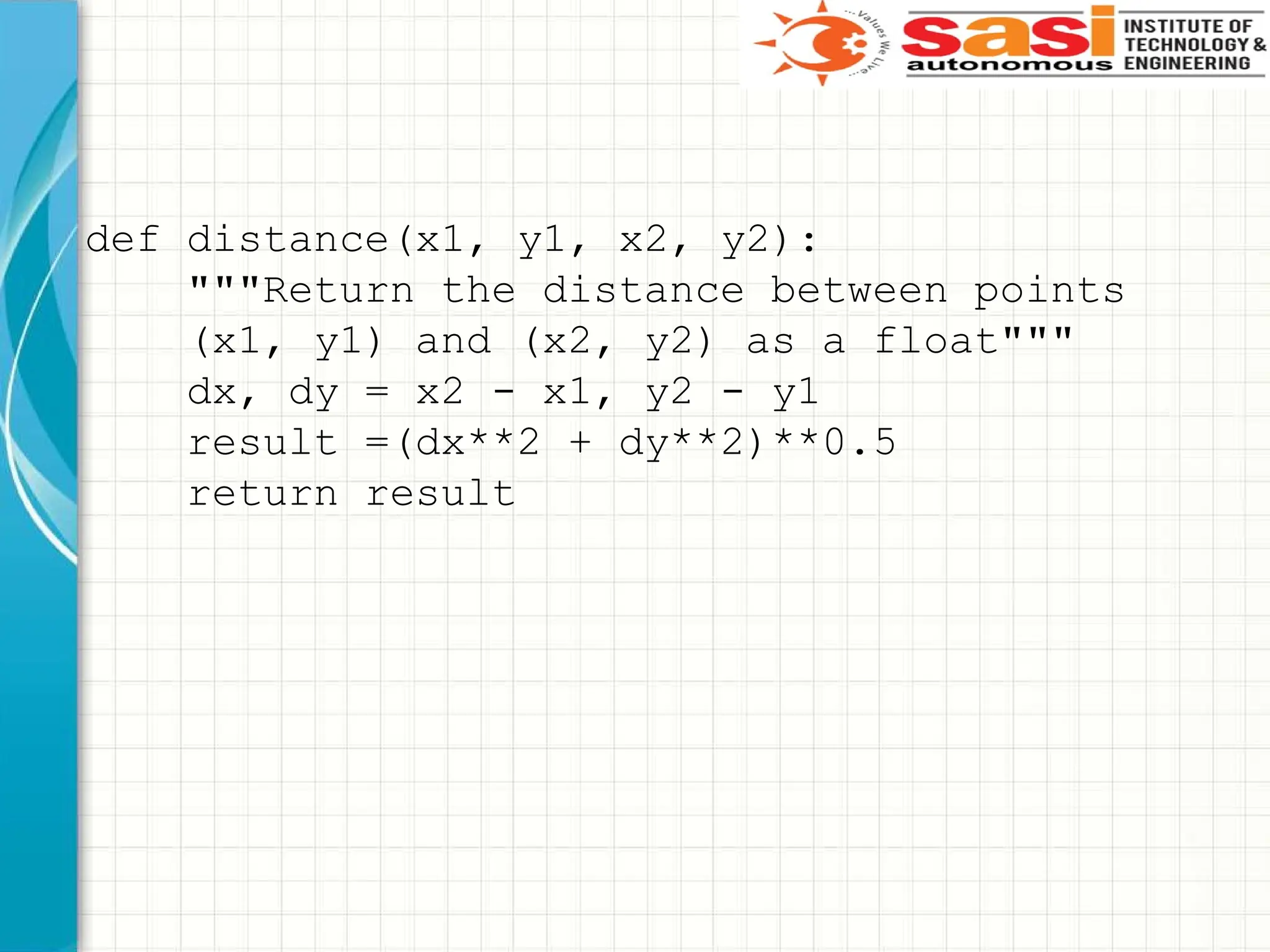
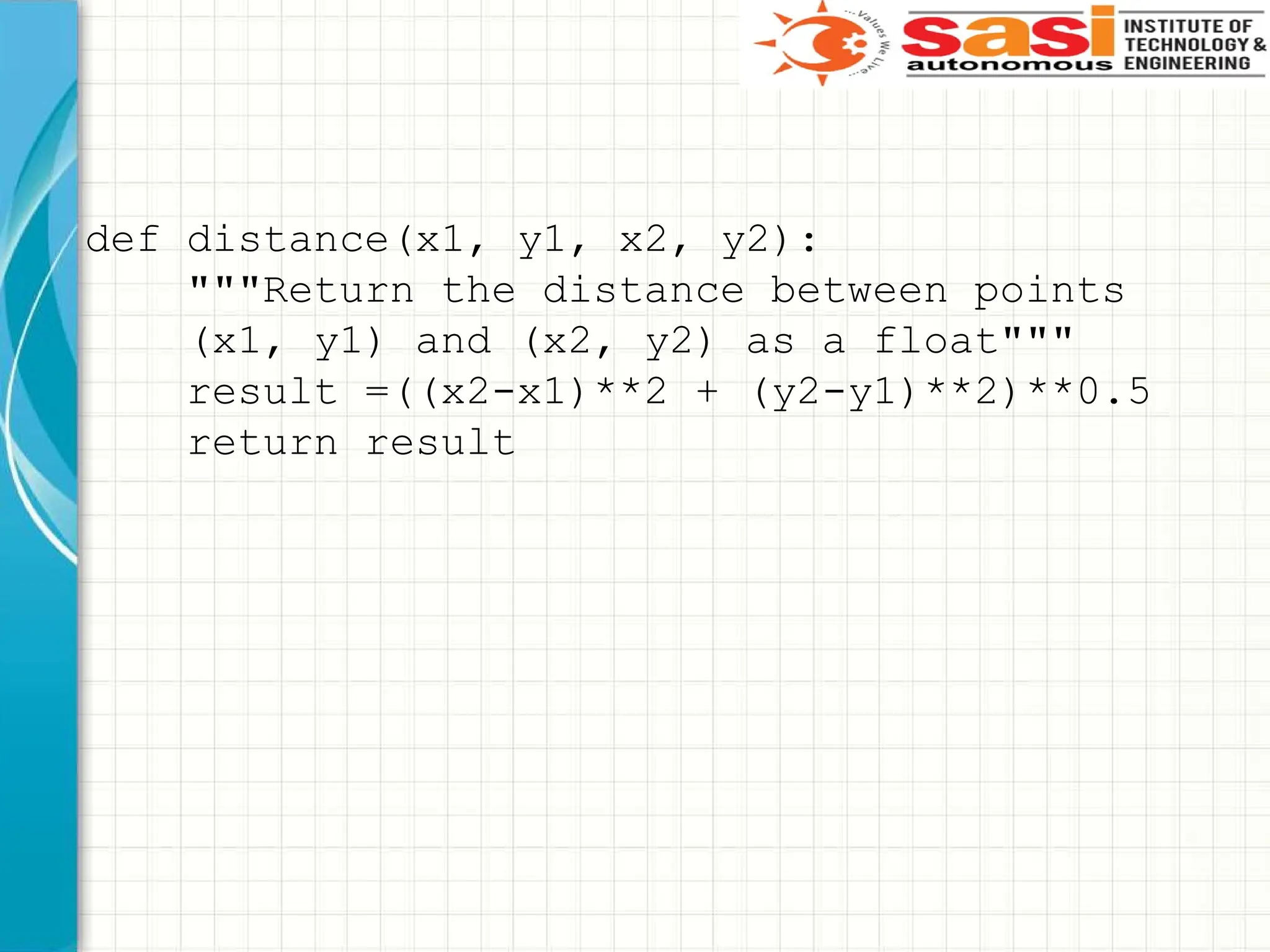
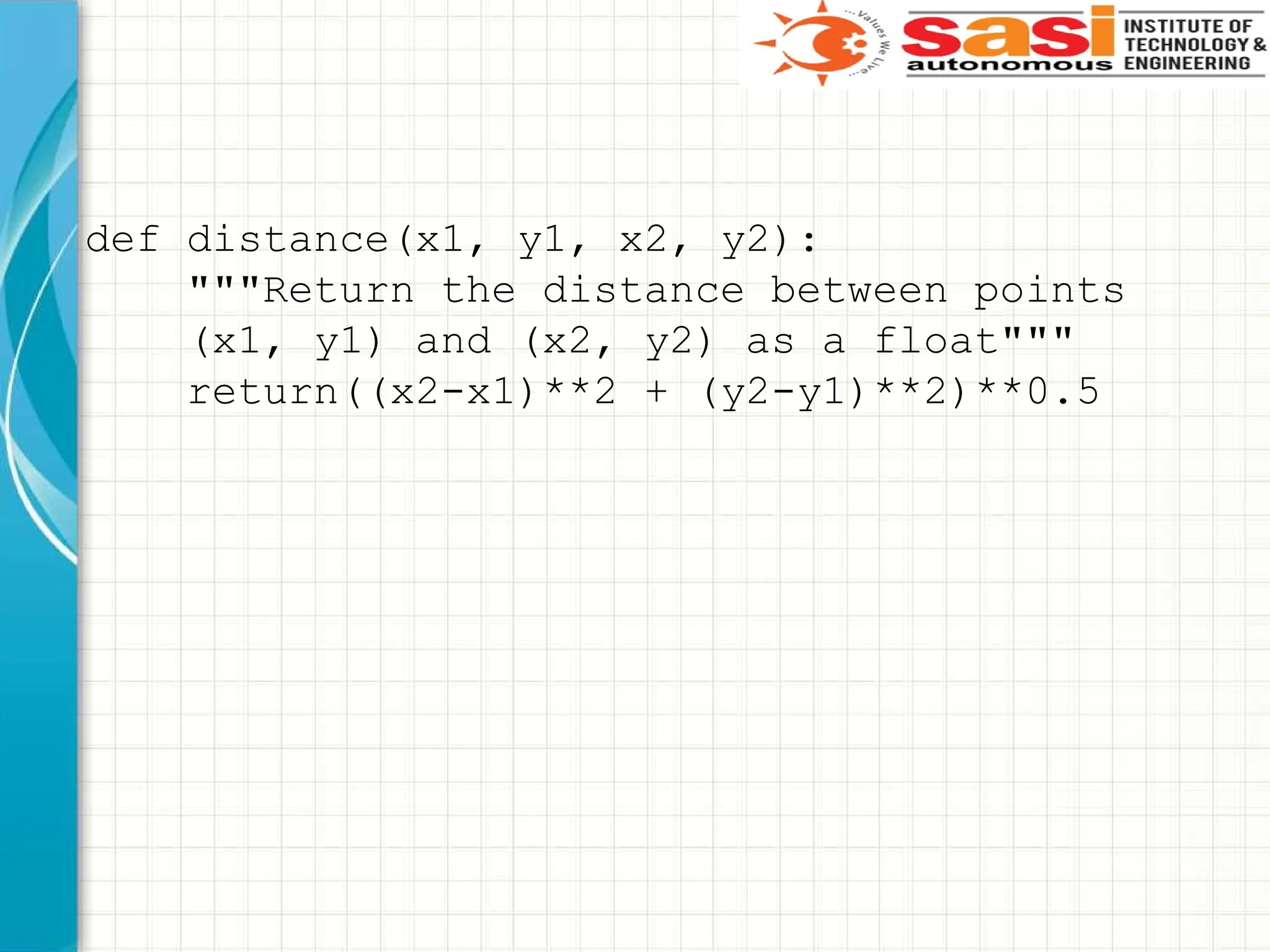
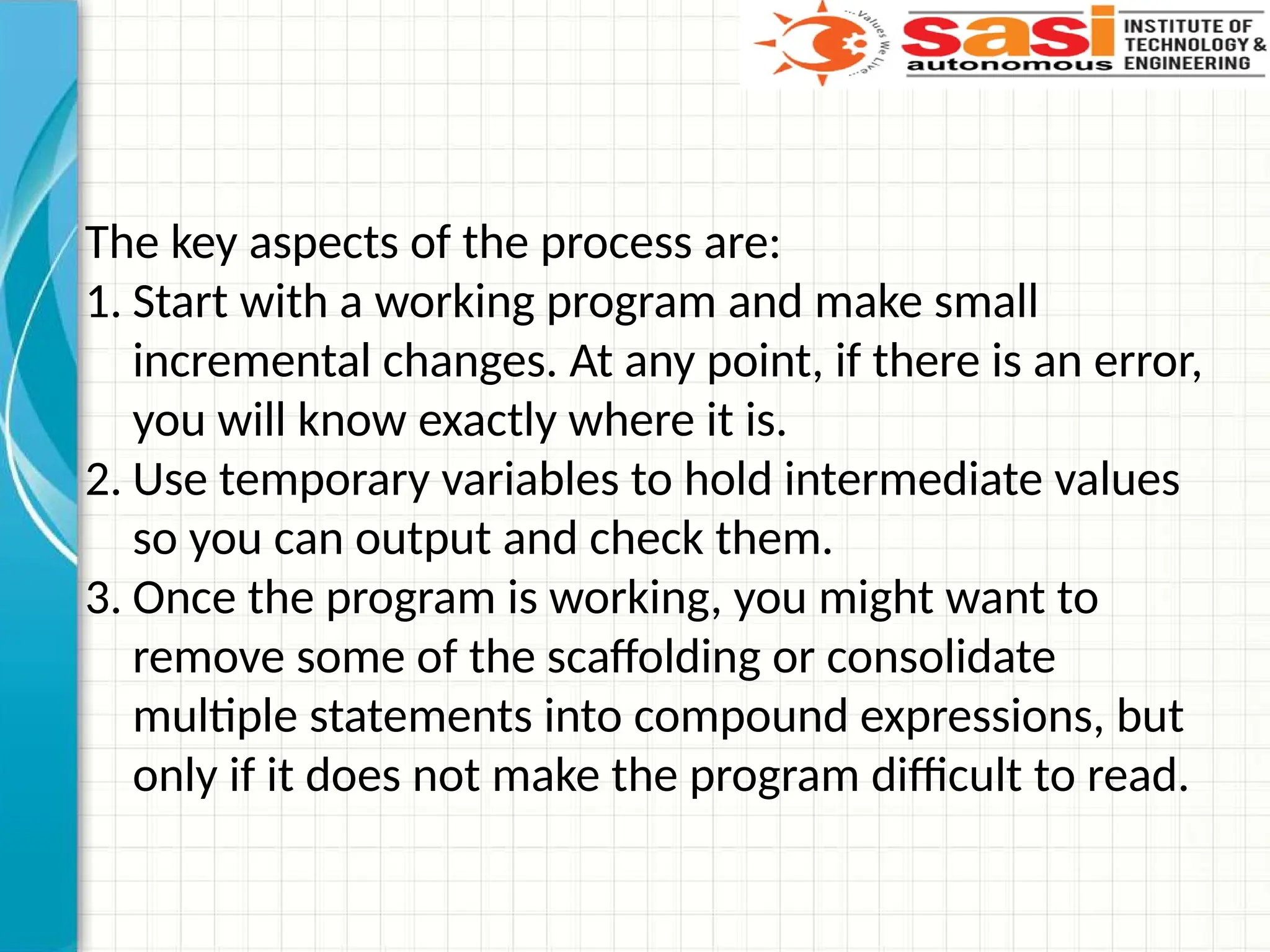
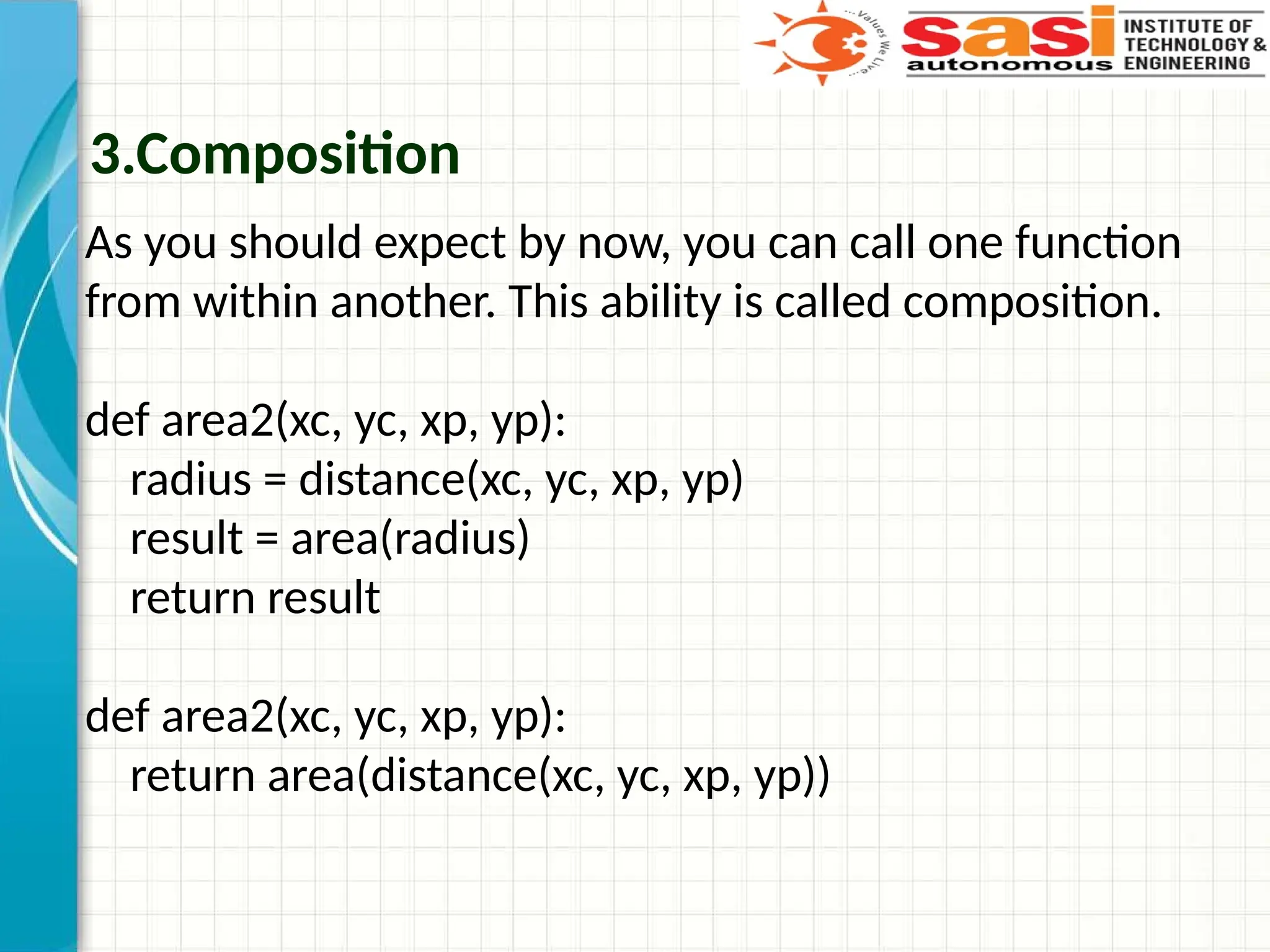
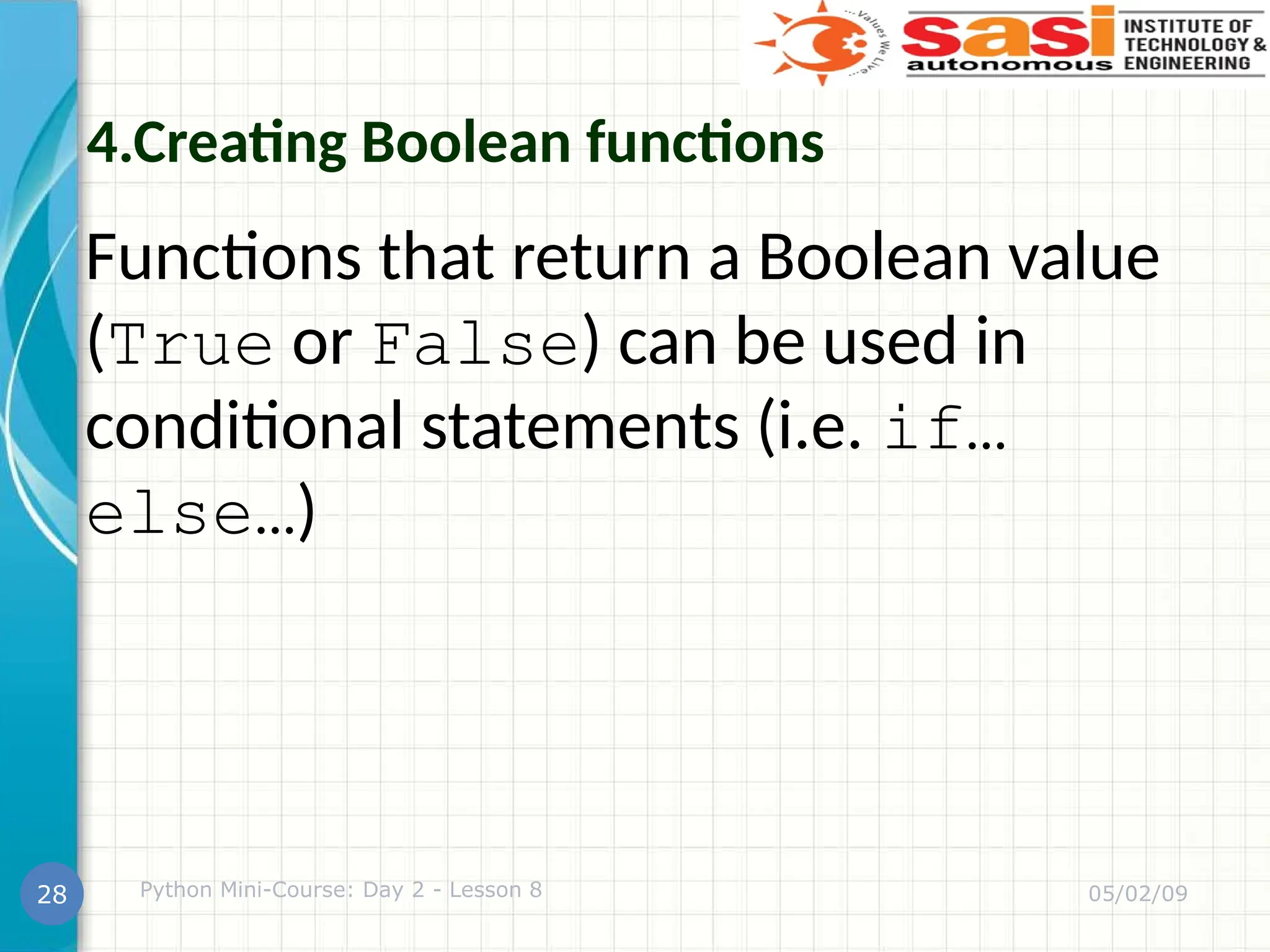
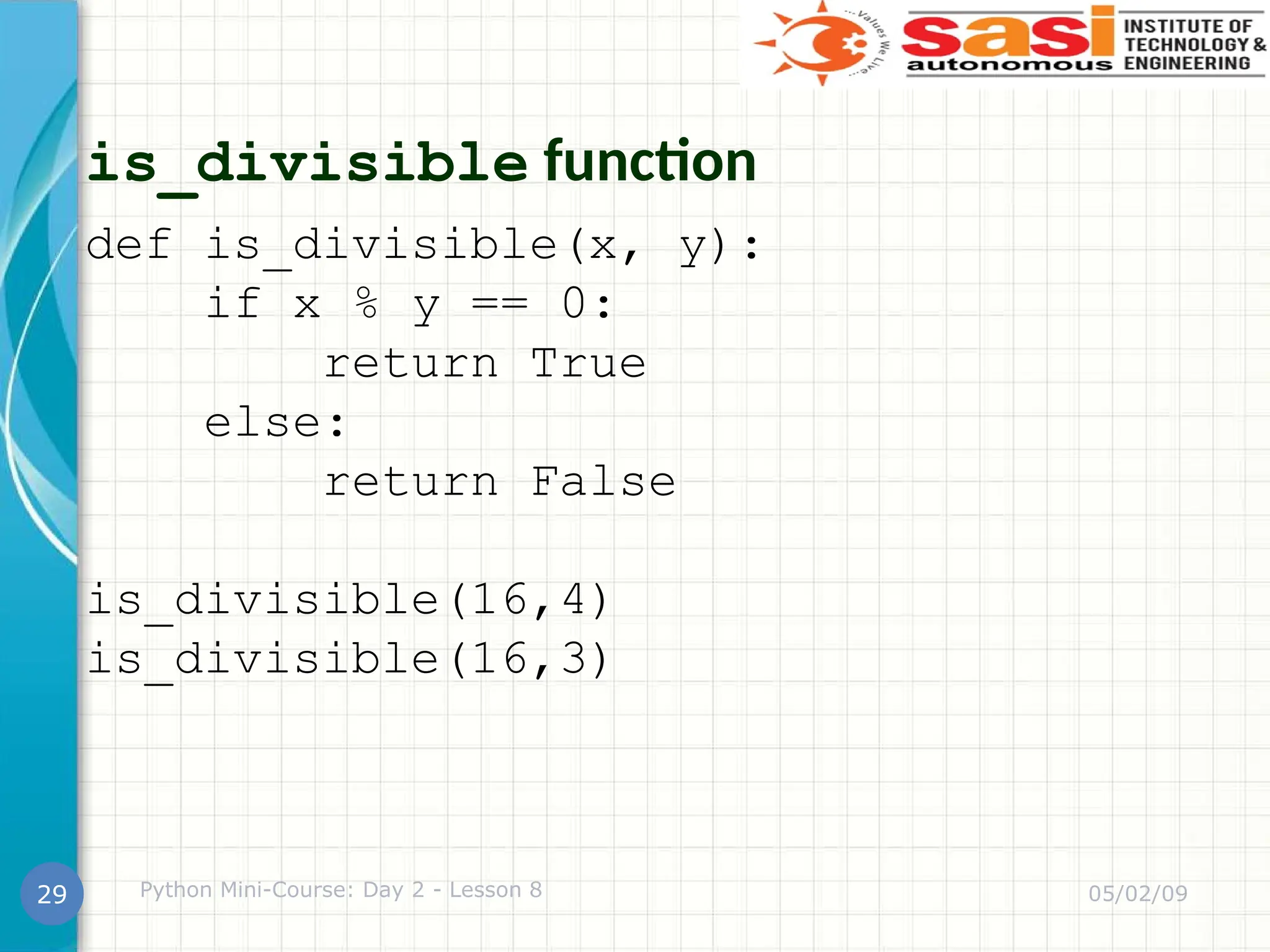
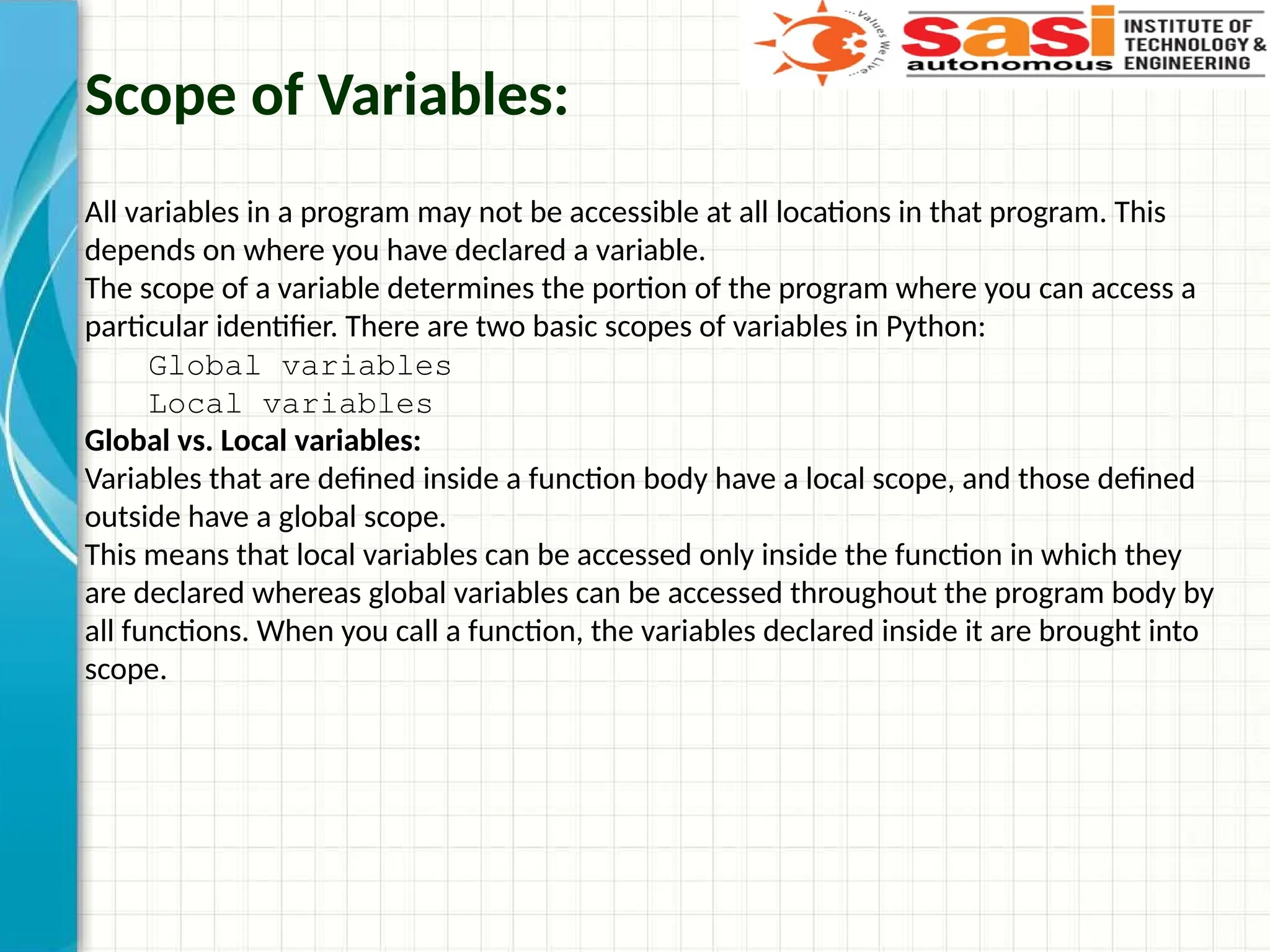
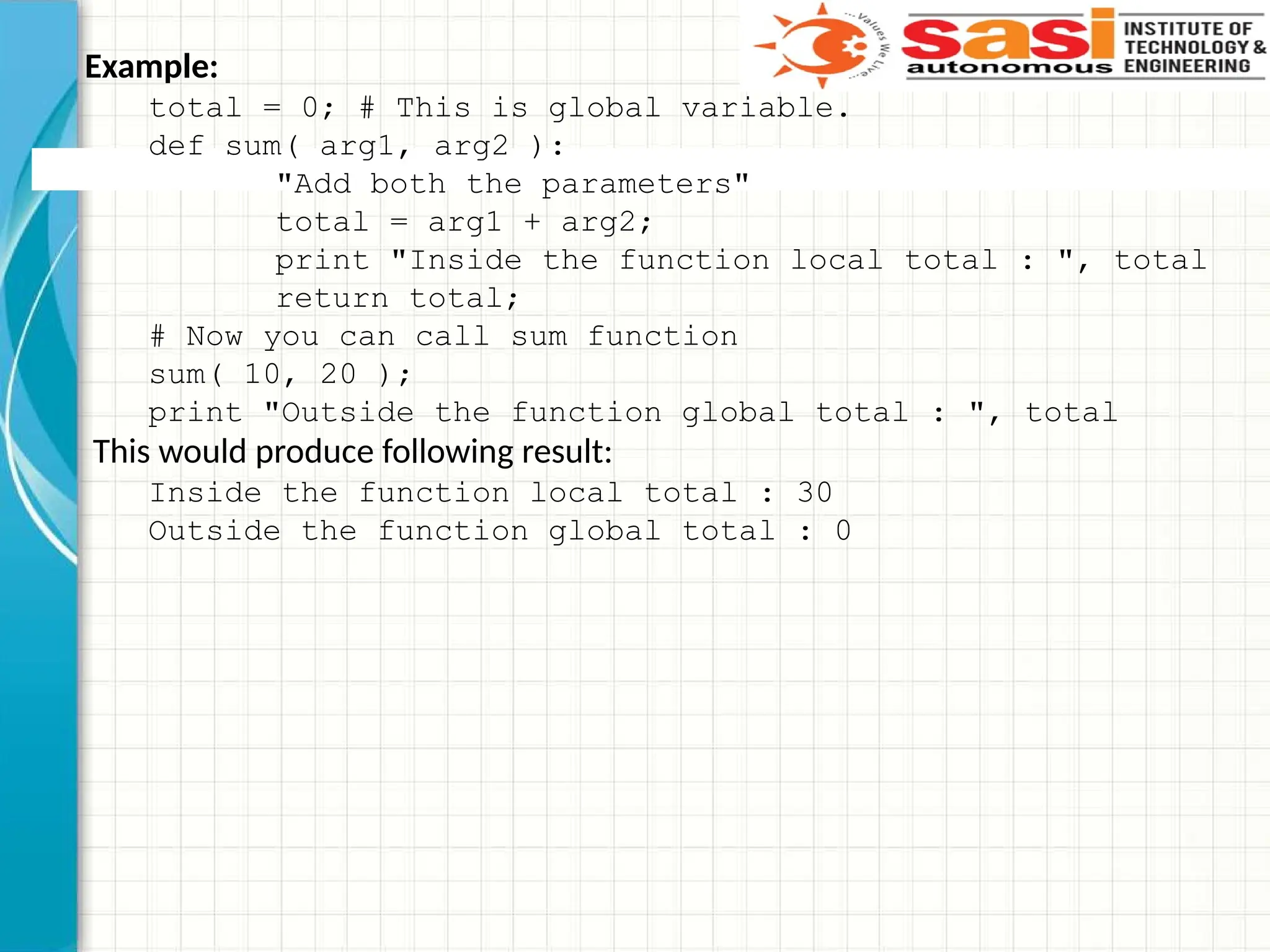
![There is one more example where argument is being passed by reference but inside the
function, but the reference is being over-written.
def changeme( mylist ): "This changes a passed list"
mylist = [1,2,3,4];
print("Values inside the function: ", mylist)
return
mylist = [10,20,30];
changeme( mylist );
Print("Values outside the function: ", mylist)
The parameter mylist is local to the function changeme. Changing mylist within the function
does not affect mylist. The function accomplishes nothing and finally this would produce
following result:
Values inside the function: [1, 2, 3, 4]
Values outside the function: [10, 20, 30]](https://image.slidesharecdn.com/pythonunit3-250119131330-f203f0f8/75/JNTUK-python-programming-python-unit-3-pptx-32-2048.jpg)
![Pass by reference vs value
All parameters (arguments) in the Python language are passed by reference. It means if
you change what a parameter refers to within a function, the change also reflects back
in the calling function. For example:
def changeme( mylist ): "This changes a passed list“
mylist.append([1,2,3,4]);
print ("Values inside the function: ", mylist)
return
mylist = [10,20,30];
changeme( mylist );
print ("Values outside the function: ", mylist)
So this would produce following result:
Values inside the function: [10, 20, 30, [1, 2, 3, 4]]
Values outside the function: [10, 20, 30, [1, 2, 3, 4]]](https://image.slidesharecdn.com/pythonunit3-250119131330-f203f0f8/75/JNTUK-python-programming-python-unit-3-pptx-33-2048.jpg)
